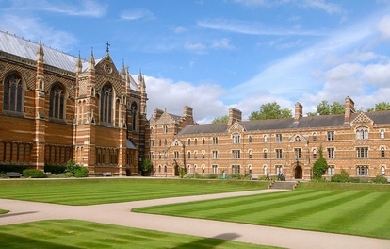

John Keble (25 April 1792– 29 March 1866) was an English churchman and poet, one of the leaders of the Oxford Movement. Keble College, Oxford was named after him. Life and writings Early life Keble was born in Fairford, Gloucestershire where his father, the Rev. John Keble, was Vicar of Coln St. Aldwyns. He attended Corpus Christi College, Oxford, and, after a brilliant academic performance there, became a Fellow of Oriel College, Oxford, and was for some years a tutor and examiner in the University. While still at Oxford he took Holy Orders in 1815, and became first a curate to his father, and later curate of St Michael and St Martin’s Church, Eastleach Martin in Gloucestershire. The Christian Year Meantime, he had been writing 'The Christian Year’, which appeared in 1827, and met with an almost unparalleled acceptance. Though at first anonymous, its authorship soon became known, with the result that Keble was in 1831 appointed to the Chair of Poetry at Oxford, which he held until 1841. Victorian scholar Michael Wheeler calls The Christian Year simply “the most popular volume of verse in the nineteenth century”. In his essay on Tractarian Aesthetics and the Romantic Tradition, Gregory Goodwin claims that The Christian Year is “Keble’s greatest contribution to the Oxford Movement and to English literature.” As evidence of that Goodwin cites E. B. Pusey’s report that ninety-five editions of this devotional text were printed during Keble’s lifetime, and “at the end of the year following his death, the number had arisen to a hundred-and-nine”. By the time the copyright expired in 1873, over 375,000 copies had been sold in Britain and 158 editions had been published. Notwithstanding its widespread appeal among the Victorian readers, the popularity of Keble’s The Christian Year faded in the twentieth century despite the familiarity of certain well-known hymns, e.g. “New every morning is the love.” Tractarianism and Vicar of Hursley In 1833 his famous Assize Sermon on “National Apostasy” gave the first impulse to the Oxford Movement, also known as the Tractarian movement. Along with his colleagues, including John Henry Newman and Edward Pusey, he became a leading light in the movement, but did not follow Newman into the Roman Catholic Church. In 1835 he was appointed Vicar of Hursley, Hampshire, where he settled down to family life and remained for the rest of his life as a parish priest at All Saints Church. He was a profound influence on a near neighbour, the author Charlotte Mary Yonge. Other writings In 1846 he published another book of poems, Lyra Innocentium. Other works were a Life of Wilson, Bishop of Sodor and Man, and an edition of the Works of Hooker. After his death appeared Letters of Spiritual Counsel, and 12 volumes of Parish Sermons. He also wrote hymns, such as “The Voice that Breathed o’er Eden” and Sun of our soul, Thou Saviour dear Biographies Two lives of Keble have been written, one by John Taylor Coleridge (1869), and the other by Rev. Walter Lock (1895). In 1963 Georgina Battiscombe wrote a biography titled John Keble: a Study in Limitations. Death Keble died in Bournemouth at the Hermitage Hotel, after visiting the area to try and recover from a long term illness as he believed the sea air had therapeutic qualities. He is buried in All Saints’ churchyard, Hursley. Legacy Keble’s feast day is kept on 14 July (the anniversary of his Assize Sermon) in the Church of England, and a commemoration observed on 29 March (the anniversary of his death) elsewhere in the Anglican Communion. Keble College, Oxford was founded in his memory. The view from Bulverton Hill, Sidmouth, is thought to have inspired 19th century poet and hymn writer John Keble to compose some of his best loved work, Keble’s Seat at Bulverton Hill is named after the English churchman and commands a panoramic view of the Lower Otter Valley and Dartmoor in the distance. He was a frequent visitor to Sidmouth and folklore suggests that Keble’s favourite spot was at Bulverton Hill where a wooden bench known as Keble’s Seat remains to this day. References Wikipedia—https://en.wikipedia.org/wiki/John_Keble
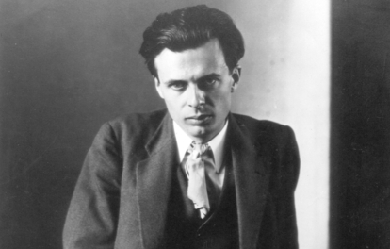
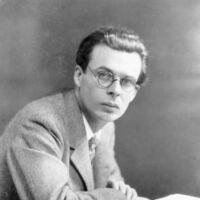
Aldous Leonard Huxley (26 July 1894 – 22 November 1963) was an English writer, philosopher and a prominent member of the Huxley family. He was best known for his novels including Brave New World, set in a dystopian London, and for non-fiction books, such as The Doors of Perception, which recalls experiences when taking a psychedelic drug, and a wide-ranging output of essays.
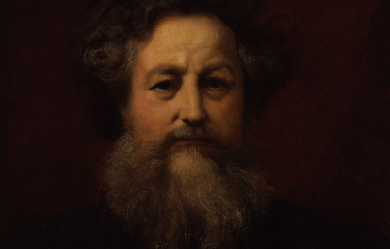

William Morris (24 March 1834– 3 October 1896) was an English textile designer, poet, novelist, translator, and socialist activist. Associated with the British Arts and Crafts Movement, he was a major contributor to the revival of traditional British textile arts and methods of production. His literary contributions helped to establish the modern fantasy genre, while he played a significant role in propagating the early socialist movement in Britain.

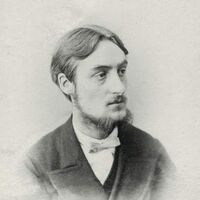
Gerard Manley Hopkins (28 July 1844 – 8 June 1889) was an English poet, Roman Catholic convert, and Jesuit priest, whose posthumous fame established him among the leading Victorian poets. His experimental explorations in prosody (especially sprung rhythm) and his use of imagery established him as a daring innovator in a period of largely traditional verse.
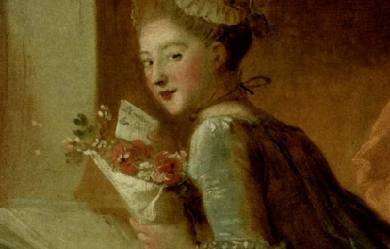

Mary Barber (c.1685– C.1755), poet, was a member of Swift’s circle. Life Mary’s parents are not known. She married the amateur artist and draper, Rupert Barber (1719-1772) from Dublin, whose pastel portrait of Swift hangs in the National Portrait Gallery London. They had nine children, four of whom survived to adulthood. She wrote, in the preface to her Poems, that she wrote mainly in order to educate her children, but most commentators agree that she had a larger audience in view and was considerably engaged with intervening in wider social and political issues, as she did with “The Widow’s Address” when she argued on behalf of the widow of an army officer. She is an example of the eighteenth-century phenomenon of the “untutored poet, or 'natural genius’”: an artist of unprepossessing background who achieved the patronage of literary or aristocratic notables. Swift named her as part of his “triumfeminate,” along with poet and scholar Constantia Grierson and literary critic Elizabeth Sican, and maintained that she was a preeminent poet—"the best Poetess of both Kingdoms"—though this assessment was not universally shared and she has only recently garnered much critical attention. She moved into his circle and knew Laetitia Pilkington, who later became her harshest critic, Mary Delany, and poets Thomas Tickell, and Elizabeth Rowe. Swift’s patronage was a substantial support to Barber’s career and her Poems on several occasions (1734) was successful. The subscription list for the volume was almost “without precedent for its resplendent length and illustrious contents, and it was moreover remarkable given Barber’s otherwise pedestrian social standing as an ailing Irish housewife.” There were over nine hundred subscribers including various aristocrats and a number of literary luminaries, notably Pope, Arbuthnot, Gay, Walpole, and of course Swift himself. She did not, however, achieve financial stability until at her request and in order to alleviate her financial distress, Swift gave her the English rights to his Complete Collection of Genteel and Ingenious Conversation (1738). Her health declined after the publication of her Poems and subsequent writing was sparse. She did publish some verses about the gout, from which she suffered for over two decades, in the Gentleman’s Magazine in 1737. She died in or around 1755. Works * “The Widow’s Address” (Dublin, 1725) * “A Tale Being an Addition to Mr. Gay’s Fables” (Dublin, 1728) * Tunbrigialia, or, Tunbridge Miscellanies, for the Year 1730 (contributor). * Poems on several occasions (sold by subscription, printed by Samuel Richardson, 1734. 2nd ed. 1735; reissued 1736). * Poems by Eminent Ladies (contributor, 1755). Resources * Coleborne, Bryan. “Barber, Mary (c.1685–1755).” Oxford Dictionary of National Biography. Ed. H. C. G. Matthew and Brian Harrison. Oxford: OUP, 2004. 1 Apr. 2007. * Fanning, Christopher. “The Voices of the Dependent Poet: the case of Mary Barber.” Women’s Writing 8.1 (2001): 81-97. * Lonsdale, Roger ed. “Mary Barber.” Eighteenth-Century Women Poets. New York: Oxford University Press, 1989. 118-129.
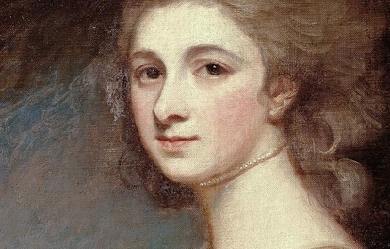
Mary Robinson (née Darby) (27 November 1757? – 26 December 1800) was an English actress, poet, dramatist, novelist, and celebrity figure. During her lifetime she was known as "the English Sappho".[1][2] She earned her nickname "Perdita" for her role as Perdita (heroine of Shakespeare's The Winter's Tale) in 1779. She was the first public mistress of King George IV while he was still Prince of Wales. Biography Early life Robinson was born in Bristol, England to John Darby, a naval captain, and his wife Hester (née Seys). In her memoirs, Robinson gives her birth in 1758 but the year 1757 seems more likely according to recently published research (see appendix to Byrne, 2005). Her father deserted her mother and took on a mistress when Robinson was still a child. The family hoped for a reconciliation, but Captain Darby made it clear that this was not going to happen. Without the support of her husband, Hester Darby supported herself and the five children born of the marriage by starting a school for young girls in Little Chelsea, London, (where Robinson taught by her 14th birthday). However, during one of his brief returns to the family, Captain Darby had the school closed (which he was entitled to do by English law). Robinson, who at one point attended a school run by the social reformer Hannah More, came to the attention of actor David Garrick. Marriage Hester Darby encouraged her daughter to accept the proposal of an articled clerk, Thomas Robinson, who claimed to have an inheritance. Mary was against this idea; however, after being stricken ill, and watching him take care of her and her younger brother, she felt that she owed him, and she did not want to disappoint her mother who was pushing for the engagement. After the early marriage, Robinson discovered that her husband did not have an inheritance. He continued to live an elaborate lifestyle, however, and had multiple affairs that he made no effort to hide. Subsequently, Mary supported their family. After her husband squandered their money, the couple fled to Wales (where Robinson’s only daughter, Mary Elizabeth, was born in November). Her husband was imprisoned for debt in the Fleet Prison where she accompanied him for many months. During this time, Mary Robinson found a patron in Georgiana Cavendish, Duchess of Devonshire, who sponsored the publication of Robinson’s first volume of poems, Captivity. Theatre After her husband obtained his release from prison, Robinson decided to return to the theatre. She launched her acting career and took to the stage, playing Juliet, at Drury Lane Theatre in December 1776. Robinson was best known for her facility with the 'breeches parts’, her performances as Viola in William Shakespeare’sTwelfth Night and Rosalind in As You Like It won her extensive praise. But she gained popularity with playing in Florizel and Perdita, an adaptation of Shakespeare, with the role of Perdita (heroine of The Winter’s Tale) in 1779. It was during this performance that she attracted the notice of the young Prince of Wales, later King George IV of the United Kingdom. He offered her twenty thousand pounds to become his mistress. With her new social prominence, Robinson became a trend-setter in London, introducing a loose, flowing muslin style of gown based upon Grecian statuary that became known as the Perdita. It took Robinson a considerable amount of time to decide to leave her husband for the Prince, as she did not want to be seen by the public as that type of woman. Throughout much of her life she struggled to live in the public eye and also to stay true to the values in which she believed. She eventually gave in to her desires to be with a man whom she thought would treat her better than Mr. Robinson. However, the Prince ended the affair in 1781, refusing to pay the promised sum. “Perdita” Robinson was left to support herself through an annuity promised by the Crown (but rarely paid), in return for some letters written by the Prince, and through her writings. Later life and death Mary Robinson, who now lived separately from her husband, went on to have several love affairs, most notably with Banastre Tarleton, a soldier who had recently distinguished himself fighting in the American War of Independence. Their relationship survived for the next 15 years, through Tarleton’s rise in military rank and his concomitant political successes, through Mary’s own various illnesses, through financial vicissitudes and the efforts of Tarleton’s own family to end the relationship. They had no children, although Robinson had a miscarriage. However, in the end, Tarleton married Susan Bertie, an heiress and an illegitimate daughter of the young 4th Duke of Ancaster, and niece of his sisters Lady Willoughby de Eresby and Lady Cholmondeley. In 1783, Robinson suffered a mysterious illness that left her partially paralysed. Biographer Paula Byrne speculates that a streptococcal infection resulting from a miscarriage led to a severe rheumatic fever that left her disabled for the rest of her life. From the late 1780s, Robinson became distinguished for her poetry and was called “the English Sappho”. In addition to poems, she wrote eight novels, three plays, feminist treatises, and an autobiographical manuscript that was incomplete at the time of her death. Like her contemporary Mary Wollstonecraft, she championed the rights of women and was an ardent supporter of the French Revolution. She died in late 1800 in poverty at the age of 43, having survived several years of ill health, and was survived by her daughter, who was also a published novelist. Literature After years of scholarly neglect, Robinson’s literary afterlife continues apace. While most of the early literature written about Robinson focused on her sexuality, emphasizing her affairs and fashions, she began to receive the attention of feminists and literary scholars in the 1990s. In addition to regaining literary and cultural notability, she has re-attained a degree of celebrity in recent years when several biographies of her appeared, including one by Paula Byrne entitled Perdita: The Literary, Theatrical, and Scandalous Life of Mary Robinson that became a top-ten best-seller after being selected for the Richard & Judy Book Club. Poetry Poems (1775) Captivity, A Poem and Celadon and Lydia, a Tale (1777) Poems (Vol. 1, 1791 / Vol. 2, 1793) London’s Summer Morning (1795) Sappho and Phaon: In a Series of Legitimate Sonnets (1796) Lyrical Tales (1800) Novels Vancenza; or, The Dangers of Credulity (1792) The Widow; or, A Picture of Modern Times (1794) Angelina; A Novel (1796) Hubert de Sevrac, A Romance, of the Eighteenth Century (1796) Walsingham: or, The Pupil of Nature, A Domestic Story (1797) The False Friend; A Domestic Story (1799) The Natural Daughter. With Portraits of the Leadenhead Family. A Novel (1799) Jasper, A Fragment [published posthumously in Memoirs of the Late Mrs. Robinson, Written by Herself (1801)] Dramas The Lucky Escape, A Comic Opera (Drury Lane, 1778) Nobody: A Comedy in Two Acts (Drury Lane, 1794) The Sicilian Lover: A Tragedy in Five Acts (never performed) Socio-political texts Impartial Reflections of the Present Situation of the Queen of France (1791) A Letter to the Women of England, on the Injustice of Mental Subordination (1799) Memoir Robinson, Mary [and Maria Elizabeth Robinson]. Memoirs of the Late Mrs. Robinson, Written by Herself. With Some Posthumous Pieces. 4 vols. London, 1801. Biographies of Robinson Byrne, Paula. Perdita: The Literary, Theatrical, and Scandalous Life of Mary Robinson. New York: Random House, 2004. Chisholm, Hugh, ed. (1911). “Robinson, Mary”. Encyclopædia Britannica 23 (11th ed.). Cambridge University Press. Davenport, Hester. The Prince’s Mistress: Perdita, a Life of Mary Robinson. Stroud: Sutton Publishing, 2004. Gristwood, Sarah. Perdita: Royal Mistress, Writer, Romantic. London: Bantam, 2005. Memoirs of Mary Robinson 1895. Knight, John Joseph (1897). “Robinson, Mary”. In Lee, Sidney. Dictionary of National Biography 49. London: Smith, Elder & Co. Ledoux, Ellen Malenas. “Florizel and Perdita Affair, 1779–80.” BRANCH: Britain, Representation and Nineteenth-Century History. Ed. Dino Franco Felluga. Extension of Romanticism and Victorianism on the Net. Web. 2 June 2013. Robinson, Mary [and Maria Elizabeth Robinson]. Memoirs of the Late Mrs. Robinson, Written by Herself. With Some Posthumous Pieces. 4 vols. London, 1801. Levy, Martin J. "Robinson, Mary [Perdita] (1756/1758?–1800)". Oxford Dictionary of National Biography (online ed.). Oxford University Press. doi:10.1093/ref:odnb/23857. (Subscription or UK public library membership required.) Resources on Robinson and her literature Brewer, William D., ed. The Works of Mary Robinson. 8 vols. Pickering & Chatto, 2009–2010. Gamer, Michael, and Terry F. Robinson. “Mary Robinson and the Dramatic Art of the Comeback.” Studies in Romanticism 48.2 (Summer 2009): 219–256. Pascoe, Judith. Mary Robinson: Selected Poems. Peterborough, ON: Broadview Press, 1999. Robinson, Daniel. The Poetry of Mary Robinson: Form and Fame. New York: Palgrave Macmillan, 2011. Robinson, Terry F. “Introduction.” Nobody. By Mary Robinson. Romantic Circles. Web. March 2013. Fictional works about Robinson Elyot, Amanda. All For Love: The Scandalous Life and Times of Royal Mistress Mary Robinson. A Novel. 2008. Lightfoot, Freda. Lady of Passion: The Story of Mary Robinson. 2013. Plaidy, Jean. Perdita’s Prince. 1969.

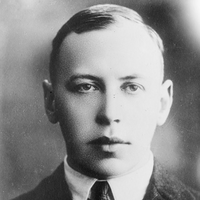
Alfred Noyes CBE (16 September 1880 – 25 June 1958) was an English poet, short-story writer and playwright, best known for his ballads, “The Highwayman” and “The Barrel-Organ”. Noyes was born in Wolverhampton, England, the son of Alfred and Amelia Adams Noyes. When he was four, the family moved to Aberystwyth, Wales, where his father taught Latin and Greek. The Welsh coast and mountains were an early inspiration to Noyes. In 1898, he left Aberystwyth for Exeter College, Oxford, where he distinguished himself at rowing, but failed to get his degree because, on a crucial day of his finals in 1903, he was meeting his publisher to arrange publication of his first volume of poems, The Loom of Years (1902).
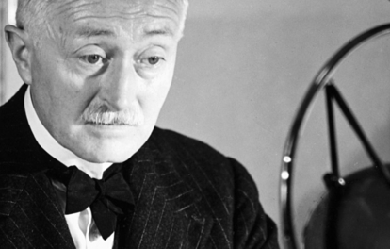
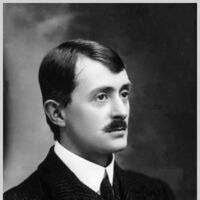
John Edward Masefield (1 June 1878 – 12 May 1967) was an English poet and writer, and Poet Laureate of the United Kingdom from 1930 until his death in 1967. He is remembered as the author of the classic children's novels The Midnight Folk and The Box of Delights, and poems, including "The Everlasting Mercy" and "Sea-Fever". Early life Masefield was born in Ledbury in Herefordshire, to Caroline and George Masefield, a solicitor. His mother died giving birth to his sister when Masefield was only six, and he went to live with his aunt. His father died soon after following a mental breakdown. After an unhappy education at the King's School in Warwick (now known as Warwick School), where he was a boarder between 1888 and 1891, he left to board the HMS Conway, both to train for a life at sea, and to break his addiction to reading, of which his aunt thought little. He spent several years aboard this ship and found that he could spend much of his time reading and writing. It was aboard the Conway that Masefield's love for story-telling grew. While on the ship, he listened to the stories told about sea lore. He continued to read, and felt that he was to become a writer and story teller himself. In 1894, Masefield boarded the Gilcruix, destined for Chile - this first voyage bringing him the experience of sea sickness. He recorded his experiences while sailing through the extreme weather, his journal entries reflecting a delight in seeing flying fish, porpoises, and birds, and was awed by the beauty of nature, including a rare sighting of a nocturnal rainbow on his voyage. On reaching Chile, Masefield suffered from sunstroke and was hospitalized. He eventually returned home to England as a passenger aboard a steam ship. In 1895, Masefield returned to sea on a windjammer destined for New York City. However, the urge to become a writer and the hopelessness of life as a sailor overtook him, and in New York, he deserted ship. He lived as a vagrant for several months, before returning to New York City, he did many odd jobs, finding work as an assistant to a bar keeper. Sometime around Christmas in 1895, Masefield read the December 1895 edition of Truth, a New York periodical, which contained the poem "The Piper of Arll" by Duncan Campbell Scott. Ten years later, Masefield wrote to Scott to tell him what reading that poem had meant to him: "I had never (till that time) cared very much for poetry, but your poem impressed me deeply, and set me on fire. Since then poetry has been the one deep influence in my life, and to my love of poetry I owe all my friends, and the position I now hold." For the next two years, Masefield was employed in a carpet factory, where long hours were expected and conditions were far from ideal. He purchased up to 20 books a week, and devoured both modern and classical literature. His interests at this time were diverse and his reading included works by George du Maurier, Dumas, Thomas Browne, Hazlitt, Dickens, Kipling, and R. L. Stevenson. Chaucer also became very important to him during this time, as well as poetry by Keats and Shelley. He eventually returned home to England in 1897 as a passenger aboard a steam ship. When Masefield was 23, he met his future wife, Constance Crommelin, who was 35. Educated in classics and English Literature, and a mathematics teacher, Constance was a match for Masefield despite the difference in age. The couple had two children (Judith, born in 1904, and Lewis, in 1910). By the time he was 24, Masefield's poems were being published in periodicals and his first collected works, Salt-Water Ballads (1902) was published, the poem "Sea-Fever" appearing in this book. Masefield then wrote the novels, Captain Margaret (1908) and Multitude and Solitude (1909). In 1911, after a long drought of poem writing, he composed "The Everlasting Mercy", the first of his narrative poems, and within the next year, Masefield had produced two more, "The Widow in the Bye Street" and "Dauber". As a result, Masefield became widely known to the public and was praised by critics, and in 1912, he was awarded the annual Edmond de Polignac prize. World War I to appointment as Poet Laureate When World War I began, though old enough to be exempted from military service, Masefield joined the staff of a British hospital for French soldiers, Hôpital Temporaire d'Arc-en-Barrois, Haute-Marne, France, serving briefly in 1915 as a hospital orderly, later publishing his own account of his experiences. After returning home, Masefield was invited to the United States on a three month lecture tour. Although Masefield's primary purpose was to lecture on English Literature, a secondary purpose was to collect information on the mood and views of Americans regarding the war in Europe. When he returned to England, he submitted a report to the British Foreign Office, and suggested that he be allowed to write a book about the failure of the allied efforts in the Dardanelles, which possibly could be used in the US in order to counter what he thought was German propaganda there. As a result, Masefield wrote Gallipoli. This work was a success, encouraging the British people, and lifting them somewhat from the disappointment they had felt as a result of the Allied losses in the Dardanelles. Due to the success of his wartime writings, Masefield met with the head of British Military Intelligence in France and was asked to write an account of the Battle of the Somme. Although Masefield had grand ideas for his book, he was denied access to the official records, and therefore, what was to be his preface to the book was published as "The Old Front Line", a description of the geography of the Somme area. In 1918, Masefield returned to America on his second lecture tour. Masefield spent much of his time speaking and lecturing to American soldiers waiting to be sent to Europe. These speaking engagements were very successful, and on one occasion, a battalion of all black soldiers danced and sang for him after his talk. During this tour, he matured as a public speaker and realized his ability to touch the emotions of his audience with his style of speaking, learning to speak publicly with his own heart, rather than from dry scripted speeches. Towards the end of his trip, both Yale and Harvard Universities conferred honorary Doctorates of Letters on him. Masefield entered the 1920s as an accomplished and respected writer. His family was able to settle on Boar's Hill, a somewhat rural setting not far from Oxford, and Masefield took up beekeeping, goat-herding and poultry-keeping. He continued to meet with success, the 1923 edition of "Collected Poems" selling approximately 80,000 copies. He produced three poems early in this decade. The first was Reynard The Fox, a poem that has been critically compared with works of Geoffrey Chaucer. This was followed by Right Royal and King Cole, poems where the relationship of humanity and nature emphasized. While Reynard is the best known of these, all met with acclaim. After King Cole Masefield turned away from the long poem and back to the novel, and from 1924 till the Second World War published twelve novels, which vary from stories of the sea (The Bird of Dawning, Victorious Troy) to social novels about modern England (The Hawbucks, The Square Peg), and from tales of an imaginary land in Central America (Sard Harker, Odtaa) to fantasies for children (The Midnight Folk, The Box of Delights). This variety in genre testifies most impressively to the breadth of his imagination, though it probably reduced his sales (which remained very respectable, however), since most readers of novels like knowing what to expect from their favourite authors. In this same period he wrote a large number of dramatic pieces. Most of these were based on Christian themes, and Masefield, to his amazement, encountered a ban on the performance of plays on biblical subjects that went back to the Reformation and had been revived a generation earlier to prevent production of Oscar Wilde's Salome. However, a compromise was reached, and in 1928 his "The Coming of Christ" was the first play to be performed in an English Cathedral since the Middle Ages. In 1921, Masefield received an Honorary Doctorate of Literature from Oxford University, and in 1923, organized the Oxford Recitations, an annual contest whose purpose was "to discover good speakers of verse and to encourage ‘the beautiful speaking of poetry.’" The Recitations were seen as a success given the numbers of contest applicants, the promotion of natural speech in poetical recitations, and the number of people learning how to listen to poetry. Masefield began to question however, whether the Recitations should continue as a contest, believing that the event should become more of a festival. In 1929, Masefield broke with the contest concept, and the Recitations came to an end. Later years and death In 1930, on the death of Robert Bridges, a new Poet Laureate was needed. Many felt that Rudyard Kipling was a likely choice, however, upon the recommendation of Prime Minister Ramsay MacDonald, King George V appointed Masefield, who remained in office until his death in 1967. The only person to hold the office for a longer period was Alfred, Lord Tennyson. On his appointment The Times newspaper said of him: ... his poetry could touch to beauty the plain speech of everyday life. Although the requirements of Poet Laureate had changed, and those in the office were rarely required to write verse for special occasions, Masefield took his appointment seriously and produced a large quantity of verse. Poems composed in his official capacity were sent to The Times. Masefield's modesty was shown by his inclusion of a stamped envelope with each submission so that his composition could be returned if it were found unacceptable for publication. Masefield was commissioned to write a poem to be set to music by the Master of the King's Musick, Sir Edward Elgar and performed at the unveiling of the Queen Alexandra Memorial by the King on 8 June 1932. This was the ode "So many true Princesses who have gone". After his appointment, Masefield was awarded the Order of Merit by King George V and many honorary degrees from British universities, in 1937 being elected as President of the Society of Authors. Masefield encouraged the continued development of English literature and poetry, and began the annual awarding of the Royal Medals for Poetry for a first or second published edition of poetry by a poet under the age of 35. Additionally, his speaking engagements were calling him further away, often on much longer tours, yet he still produced significant amounts of work in a wide variety of genres. To those he had already used he now added autobiography, producing New Chum, In the Mill, and So Long to Learn. Some critics judged Masefield to be an even finer writer of prose than of verse. It was not until about the age of 70 that Masefield slowed his pace due to illness. In 1960, Constance died at 93, after a long illness. Although her death was heartrending, he had spent a tiring year watching the woman he loved die. He continued his duties as Poet Laureate; In Glad Thanksgiving, his last book, was published when he was 88 years old. In late 1966, Masefield developed gangrene in his ankle. This spread to his leg, and he died of the infection on 12 May 1967. According to his wishes, he was cremated and his ashes placed in Poets’ Corner in Westminster Abbey. Later, the following verse was discovered, written by Masefield, addressed to his "Heirs, Administrators, and Assigns": Let no religious rite be done or read In any place for me when I am dead, But burn my body into ash, and scatter The ash in secret into running water, Or on the windy down, and let none see; And then thank God that there's an end of me. The Masefield Centre at Warwick School, which Masefield attended, and a high school in Ledbury, Herefordshire have been named in his honour. In 1977, Folkways Records released an album of his poetry, including some read by Masefield himself. Art song settings Many of Masefield's short poems were set as art songs by British composers of the time. Best known by far is John Ireland's "Sea Fever", the lasting popularity of which belies any mismatch between the urgency of the language and the slow, swung melody. Frederick Keel crafted several songs drawn from the Salt-Water Ballads and elsewhere. Of these, "Trade Winds" was particularly popular in its day, despite the tongue-twisting challenges the text presents to the singer. Keel's defiant setting of "Tomorrow", written while interned at Ruhleben during World War I, was frequently programmed at the BBC Proms after the war. Another memorable wartime composition is Ivor Gurney's climactic declamation of "By a bierside", a setting quickly set down in 1916 during a brief spell behind the lines. References Wikipedia - http://en.wikipedia.org/wiki/John_Masefield

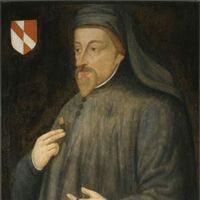
Geoffrey Chaucer (c. 1343 – 25 October 1400), known as the Father of English literature, is widely considered the greatest English poet of the Middle Ages and was the first poet to have been buried in Poet's Corner of Westminster Abbey. While he achieved fame during his lifetime as an author, philosopher, alchemist and astronomer, composing a scientific treatise on the astrolabe for his ten year-old son Lewis, Chaucer also maintained an active career in the civil service as a bureaucrat, courtier and diplomat. Among his many works, which include The Book of the Duchess, the House of Fame, the Legend of Good Women and Troilus and Criseyde, he is best known today for The Canterbury Tales. Chaucer is a crucial figure in developing the legitimacy of the vernacular, Middle English, at a time when the dominant literary languages in England were French and Latin. Geoffrey Chaucer was born in London sometime around 1343, though the precise date and location of his birth remain unknown. His father and grandfather were both London vintners; several previous generations had been merchants in Ipswich. (His family name derives from the French chausseur, meaning "shoemaker".)[1] In 1324 John Chaucer, Geoffrey's father, was kidnapped by an aunt in the hope of marrying the twelve-year-old boy to her daughter in an attempt to keep property in Ipswich. The aunt was imprisoned and the £250 fine levied suggests that the family was financially secure—bourgeois, if not elite.[2] John Chaucer married Agnes Copton, who, in 1349, inherited properties including 24 shops in London from her uncle, Hamo de Copton, who is described in a will dated 3 April 1354 and listed in the City Hustings Roll as "moneyer"; he was said to be moneyer at the Tower of London. In the City Hustings Roll 110, 5, Ric II, dated June 1380, Geoffrey Chaucer refers to himself as me Galfridum Chaucer, filium Johannis Chaucer, Vinetarii, Londonie' . While records concerning the lives of his contemporary poets, William Langland and the Pearl Poet are practically non-existent, since Chaucer was a public servant, his official life is very well documented, with nearly five hundred written items testifying to his career. The first of the "Chaucer Life Records" appears in 1357, in the household accounts of Elizabeth de Burgh, the Countess of Ulster, when he became the noblewoman's page through his father's connections.[3] She was married to Lionel, Duke of Clarence, the second surviving son of the king, Edward III, and the position brought the teenage Chaucer into the close court circle, where he was to remain for the rest of his life. He also worked as a courtier, a diplomat, and a civil servant, as well as working for the king, collecting and inventorying scrap metal. In 1359, in the early stages of the Hundred Years' War, Edward III invaded France and Chaucer travelled with Lionel of Antwerp, 1st Duke of Clarence, Elizabeth's husband, as part of the English army. In 1360, he was captured during the siege of Rheims. Edward paid £16 for his ransom, a considerable sum, and Chaucer was released. After this, Chaucer's life is uncertain, but he seems to have travelled in France, Spain, and Flanders, possibly as a messenger and perhaps even going on a pilgrimage to Santiago de Compostela. Around 1366, Chaucer married Philippa (de) Roet. She was a lady-in-waiting to Edward III's queen, Philippa of Hainault, and a sister of Katherine Swynford, who later (ca. 1396) became the third wife of John of Gaunt. It is uncertain how many children Chaucer and Philippa had, but three or four are most commonly cited. His son, Thomas Chaucer, had an illustrious career, as chief butler to four kings, envoy to France, and Speaker of the House of Commons. Thomas's daughter, Alice, married the Duke of Suffolk. Thomas's great-grandson (Geoffrey's great-great-grandson), John de la Pole, Earl of Lincoln, was the heir to the throne designated by Richard III before he was deposed. Geoffrey's other children probably included Elizabeth Chaucy, a nun at Barking Abbey. Agnes, an attendant at Henry IV's coronation; and another son, Lewis Chaucer. Chaucer’s “Treatise on the Astrolabe” was written for Lewis. Chaucer probably studied law in the Inner Temple (an Inn of Court) at this time. He became a member of the royal court of Edward III as a varlet de chambre, yeoman, or esquire on 20 June 1367, a position which could entail a wide variety of tasks. His wife also received a pension for court employment. He travelled abroad many times, at least some of them in his role as a valet. In 1368, he may have attended the wedding of Lionel of Antwerp to Violante Visconti, daughter of Galeazzo II Visconti, in Milan. Two other literary stars of the era were in attendance: Jean Froissart and Petrarch. Around this time, Chaucer is believed to have written The Book of the Duchess in honour of Blanche of Lancaster, the late wife of John of Gaunt, who died in 1369. Chaucer travelled to Picardy the next year as part of a military expedition; in 1373 he visited Genoa and Florence. Numerous scholars such as Skeat, Boitani, and Rowland suggested that, on this Italian trip, he came into contact with Petrarch or Boccaccio. They introduced him to medieval Italian poetry, the forms and stories of which he would use later. The purposes of a voyage in 1377 are mysterious, as details within the historical record conflict. Later documents suggest it was a mission, along with Jean Froissart, to arrange a marriage between the future King Richard II and a French princess, thereby ending the Hundred Years War. If this was the purpose of their trip, they seem to have been unsuccessful, as no wedding occurred. In 1378, Richard II sent Chaucer as an envoy (secret dispatch) to the Visconti and to Sir John Hawkwood, English condottiere (mercenary leader) in Milan. It has been speculated that it was Hawkwood on whom Chaucer based his character the Knight in the Canterbury Tales, for a description matches that of a fourteenth-century condottiere. A possible indication that his career as a writer was appreciated came when Edward III granted Chaucer "a gallon of wine daily for the rest of his life" for some unspecified task. This was an unusual grant, but given on a day of celebration, St George's Day, 1374, when artistic endeavours were traditionally rewarded, it is assumed to have been another early poetic work. It is not known which, if any, of Chaucer's extant works prompted the reward, but the suggestion of him as poet to a king places him as a precursor to later poets laureate. Chaucer continued to collect the liquid stipend until Richard II came to power, after which it was converted to a monetary grant on 18 April 1378. Chaucer obtained the very substantial job of Comptroller of the Customs for the port of London, which he began on 8 June 1374.[10] He must have been suited for the role as he continued in it for twelve years, a long time in such a post at that time. His life goes undocumented for much of the next ten years, but it is believed that he wrote (or began) most of his famous works during this period. He was mentioned in law papers of 4 May 1380, involved in the raptus of Cecilia Chaumpaigne. What raptus means is unclear, but the incident seems to have been resolved quickly and did not leave a stain on Chaucer's reputation. It is not known if Chaucer was in the city of London at the time of the Peasants' Revolt, but if he was, he would have seen its leaders pass almost directly under his apartment window at Aldgate. While still working as comptroller, Chaucer appears to have moved to Kent, being appointed as one of the commissioners of peace for Kent, at a time when French invasion was a possibility. He is thought to have started work on The Canterbury Tales in the early 1380s. He also became a Member of Parliament for Kent in 1386. There is no further reference after this date to Philippa, Chaucer's wife, and she is presumed to have died in 1387. He survived the political upheavals caused by the Lords Appellants, despite the fact that Chaucer knew some of the men executed over the affair quite well. On 12 July 1389, Chaucer was appointed the clerk of the king's works, a sort of foreman organising most of the king's building projects.[12] No major works were begun during his tenure, but he did conduct repairs on Westminster Palace, St. George's Chapel, Windsor, continue building the wharf at the Tower of London, and build the stands for a tournament held in 1390. It may have been a difficult job, but it paid well: two shillings a day, more than three times his salary as a comptroller. Chaucer was also appointed keeper of the lodge at the King’s park in Feckenham, which was a largely honorary appointment.[13] In September 1390, records say that he was robbed, and possibly injured, while conducting the business, and it was shortly after, on 17 June 1391, that he stopped working in this capacity. Almost immediately, on 22 June, he began as Deputy Forester in the royal forest of North Petherton, Somerset. This was no sinecure, with maintenance an important part of the job, although there were many opportunities to derive profit. He was granted an annual pension of twenty pounds by Richard II in 1394.[14] It is believed that Chaucer stopped work on the Canterbury Tales sometime towards the end of this decade. Not long after the overthrow of his patron, Richard II, in 1399, Chaucer's name fades from the historical record. The last few records of his life show his pension renewed by the new king, and his taking of a lease on a residence within the close of Westminster Abbey on 24 December 1399.[15] Although Henry IV renewed the grants assigned to Chaucer by Richard, Chaucer's own The Complaint of Chaucer to his Purse hints that the grants might not have been paid. The last mention of Chaucer is on 5 June 1400, when some monies owed to him were paid. He is believed to have died of unknown causes on 25 October 1400, but there is no firm evidence for this date, as it comes from the engraving on his tomb, erected more than one hundred years after his death. There is some speculation—most recently in Terry Jones' book Who Murdered Chaucer? : A Medieval Mystery—that he was murdered by enemies of Richard II or even on the orders of his successor Henry IV, but the case is entirely circumstantial. Chaucer was buried in Westminster Abbey in London, as was his right owing to his status as a tenant of the Abbey's close. In 1556, his remains were transferred to a more ornate tomb, making Chaucer the first writer interred in the area now known as Poets' Corner. Work Chaucer's first major work, The Book of the Duchess, was an elegy for Blanche of Lancaster (who died in 1369). It is possible that this work was commissioned by her husband John of Gaunt, as he granted Chaucer a £10 annuity on 13 June 1374. This would seem to place the writing of The Book of the Duchess between the years 1369 and 1374. Two other early works by Chaucer were Anelida and Arcite and The House of Fame. Chaucer wrote many of his major works in a prolific period when he held the job of customs comptroller for London (1374 to 1386). His Parlement of Foules, The Legend of Good Women and Troilus and Criseyde all date from this time. Also it is believed that he started work on The Canterbury Tales in the early 1380s. Chaucer is best known as the writer of The Canterbury Tales, which is a collection of stories told by fictional pilgrims on the road to the cathedral at Canterbury; these tales would help to shape English literature. The Canterbury Tales contrasts with other literature of the period in the naturalism of its narrative, the variety of stories the pilgrims tell and the varied characters who are engaged in the pilgrimage. Many of the stories narrated by the pilgrims seem to fit their individual characters and social standing, although some of the stories seem ill-fitting to their narrators, perhaps as a result of the incomplete state of the work. Chaucer drew on real life for his cast of pilgrims: the innkeeper shares the name of a contemporary keeper of an inn in Southwark, and real-life identities for the Wife of Bath, the Merchant, the Man of Law and the Student have been suggested. The many jobs that Chaucer held in medieval society—page, soldier, messenger, valet, bureaucrat, foreman and administrator—probably exposed him to many of the types of people he depicted in the Tales. He was able to shape their speech and satirise their manners in what was to become popular literature among people of the same types. Chaucer's works are sometimes grouped into first a French period, then an Italian period and finally an English period, with Chaucer being influenced by those countries' literatures in turn. Certainly Troilus and Criseyde is a middle period work with its reliance on the forms of Italian poetry, little known in England at the time, but to which Chaucer was probably exposed during his frequent trips abroad on court business. In addition, its use of a classical subject and its elaborate, courtly language sets it apart as one of his most complete and well-formed works. In Troilus and Criseyde Chaucer draws heavily on his source, Boccaccio, and on the late Latin philosopher Boethius. However, it is The Canterbury Tales, wherein he focuses on English subjects, with bawdy jokes and respected figures often being undercut with humour, that has cemented his reputation. Chaucer also translated such important works as Boethius' Consolation of Philosophy and The Romance of the Rose by Guillaume de Lorris (extended by Jean de Meun). However, while many scholars maintain that Chaucer did indeed translate part of the text of Roman de la Rose as The Romaunt of the Rose, others claim that this has been effectively disproved. Many of his other works were very loose translations of, or simply based on, works from continental Europe. It is in this role that Chaucer receives some of his earliest critical praise. Eustache Deschamps wrote a ballade on the great translator and called himself a "nettle in Chaucer's garden of poetry". In 1385 Thomas Usk made glowing mention of Chaucer, and John Gower, Chaucer's main poetic rival of the time, also lauded him. This reference was later edited out of Gower's Confessio Amantis and it has been suggested by some that this was because of ill feeling between them, but it is likely due simply to stylistic concerns. One other significant work of Chaucer's is his Treatise on the Astrolabe, possibly for his own son, that describes the form and use of that instrument in detail and is sometimes cited as the first example of technical writing in the English language. Although much of the text may have come from other sources, the treatise indicates that Chaucer was versed in science in addition to his literary talents. Another scientific work discovered in 1952, Equatorie of the Planetis, has similar language and handwriting compared to some considered to be Chaucer's and it continues many of the ideas from the Astrolabe. Furthermore, it contains an example of early European encryption.[16] The attribution of this work to Chaucer is still uncertain. Selected Works The Canterbury Tales Troilus and Criseyde Treatise on the Astrolabe The Legend of Good Women Parlement of Foules Anelida and Arcite The House of Fame The Book of the Duchess Roman de la Rose Translation of Boethius' Consolation of Philosophy (as Boece) References Wikipedia – http://en.wikipedia.org/wiki/Geoffrey_Chaucer
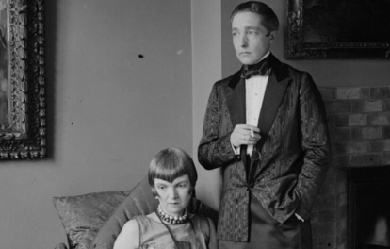
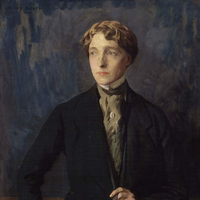
Marguerite Radclyffe Hall (12 August 1880– 7 October 1943) was an English poet and author. She is best known for the novel The Well of Loneliness, a groundbreaking work in lesbian literature. Life Marguerite Radclyffe Hall was born in 1880 at “Sunny Lawn”, Durley Road, Bournemouth, Hampshire (now Dorset), to a wealthy philandering father, Radclyffe Radclyffe-Hall, and an unstable mother, Mary Jane Diehl. Her stepfather was the professor of singing Albert Visetti, whom she did not like and who had a tempestuous relationship with her mother. Hall was a lesbian and described herself as a “congenital invert”, a term taken from the writings of Havelock Ellis and other turn-of-the-century sexologists. Having reached adulthood without a vocation, she spent much of her twenties pursuing women she eventually lost to marriage. In 1907 at the Bad Homburg spa in Germany, Hall met Mabel Batten, a well-known amateur singer of lieder. Batten (nicknamed “Ladye”) was 51 to Hall’s 27, and was married with an adult daughter and grandchildren. They fell in love, and after Batten’s husband died they set up residence together. Batten gave Hall the nickname John, which she used the rest of her life. In 1915 Hall fell in love with Mabel Batten’s cousin Una Troubridge (1887–1963), a sculptor who was the wife of Vice-Admiral Ernest Troubridge, and the mother of a young daughter. Batten died the following year, and in 1917 Radclyffe Hall and Una Troubridge began living together. From 1924 to 1929 they lived at 37 Holland Street, Kensington, London. The relationship would last until Hall’s death. In 1934 Hall fell in love with Russian émigrée Evguenia Souline and embarked upon a long-term affair with her, which Troubridge painfully tolerated. She became involved in affairs with other women throughout the years. Later years and death Hall lived with Troubridge in London and, during the 1930s, in the tiny town of Rye, East Sussex, noted for its many writers, including her contemporary the novelist E. F. Benson. Hall died at age 63 of colon cancer, and is interred at Highgate Cemetery in North London at the entrance of the chamber of the Batten family, where Mabel is buried as well. In 1930, Hall received the Gold Medal of the Eichelbergher Humane Award. She was a member of the PEN club, the Council of the Society for Psychical Research and a fellow of the Zoological Society. Radclyffe Hall was listed at number sixteen in the top 500 lesbian and gay heroes in The Pink Paper. Novels Hall’s first novel was The Unlit Lamp, the story of Joan Ogden, a young girl who dreams of setting up a flat in London with her friend Elizabeth (a so-called Boston marriage) and studying to become a doctor, but feels trapped by her manipulative mother’s emotional dependence on her. Its length and grimness made it a difficult book to sell, so she deliberately chose a lighter theme for her next novel, a social comedy entitled The Forge. While she had used her full name for her early poetry collections, she shortened it to M. Radclyffe Hall for The Forge. The book was a modest success, making the bestseller list of John O’London’s Weekly. The Unlit Lamp, which followed it into print, was the first of her books to give the author’s name simply as Radclyffe Hall. There followed another comic novel, A Saturday Life (1925), and then Adam’s Breed (1926), a novel about an Italian headwaiter who, becoming disgusted with his job and even with food itself, gives away his belongings and lives as a hermit in the forest. The book’s mystical themes have been compared to Hermann Hesse’s Siddhartha. It sold well, was critically acclaimed, and won both the Prix Femina and the James Tait Black Prize, a feat previously achieved only by E. M. Forster’s A Passage to India. The Well of Loneliness Hall’s best-known work was The Well of Loneliness, the only one of her eight novels to have overt lesbian themes. Published in 1928, The Well of Loneliness deals with the life of Stephen Gordon, a masculine lesbian who, like Hall herself, identifies as an “invert”. Although The Well of Loneliness is not sexually explicit, it was nevertheless the subject of an obscenity trial in the UK, which resulted in all copies of the novel being ordered destroyed. The United States allowed its publication only after a long court battle. It is currently published in the UK by Virago, and by Anchor Press in the United States. The Well of Loneliness was number seven on a list of the top 100 lesbian and gay novels compiled by The Publishing Triangle in 1999. Later novels An anonymous verse lampoon entitled The Sink of Solitude appeared during the controversy over The Well. Although its primary targets were James Douglas, who had called for The Well’s suppression, and the Home Secretary William Joynson-Hicks, who had started legal proceedings, it also mocked Hall and her book. One of the illustrations, which depicted Hall nailed to a cross, so horrified her that she could barely speak of it for years afterward. Her sense of guilt at being depicted in a drawing that she saw as blasphemous led to her choice of a religious subject for her next novel, The Master of the House. At Hall’s insistence, The Master of the House was published with no cover blurb, which may have misled some purchasers into thinking it was another novel about “inversion”. Advance sales were strong, and the book made No. 1 on The Observer’s bestseller list, but it received poor reviews in several key periodicals, and sales soon dropped off. In the United States reviewers treated the book more kindly, but shortly after the book’s publication, all copies were seized—not by the police, but by creditors. Hall’s American publisher had gone bankrupt. Houghton Mifflin took over the rights, but by the time the book could be republished, its sales momentum was lost. The Girls of Radcliff Hall The British composer and bon-vivant Gerald Tyrwhitt-Wilson, 14th Baron Berners, wrote a roman à clef girls’ school story entitled The Girls of Radcliff Hall, in which he depicts himself and his circle of friends, including Cecil Beaton and Oliver Messel, as lesbian schoolgirls at a school named “Radcliff Hall”. The novel was written under the pseudonym “Adela Quebec” and published and distributed privately; the indiscretions to which it alluded created an uproar among Berners’s intimates and acquaintances, making the whole affair highly discussed in the 1930s. Cecil Beaton attempted to have all the copies destroyed. The novel subsequently disappeared from circulation, making it extremely rare. The story is, however, included in Berners’ Collected Tales and Fantasies. Works Novels * The Forge (1924) * The Unlit Lamp (1924) * A Saturday Life (1925) * Adam's Breed (1926) * The Well of Loneliness (1928) * The Master of the House (1932) * Miss Ogilvy Finds Herself (1926) * The Sixth Beatitude (William Heineman Ltd, London, 1936) Poetry * Dedicated to Sir Arthur Sullivan (England: s.n., 1894) * Twixt Earth and Stars (London: John and Edward Bumpus Ltd., 1906) * A Sheaf of Verses : Poems (London: J. and E. Bumpus, 1908) * Poems of the Past & Present (London: Chapman And Hall, 1910) * Songs of Three Counties and Other Poems (London: Chapman & Hall, 1913) * The Forgotten Island (London: Chapman & Hall, 1915) * Rhymes and Rhythms (Milan, 1948) References Wikipedia—https://en.wikipedia.org/wiki/Radclyffe_Hall
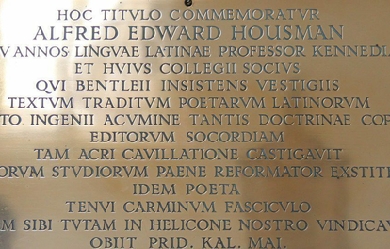
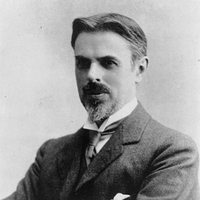
Alfred Edward Housman was born in Fockbury, Worcestershire, England, on March 26, 1859, the eldest of seven children. A year after his birth, Housman’s family moved to nearby Bromsgrove, where the poet grew up and had his early education. In 1877, he attended St. John’s College, Oxford and received first class honours in classical moderations. Housman became distracted, however, when he fell in love with his heterosexual roommate Moses Jackson. He unexpectedly failed his final exams, but managed to pass the final year and later took a position as clerk in the Patent Office in London for ten years. During this time he studied Greek and Roman classics intensively, and in 1892 was appointed professor of Latin at University College, London. In 1911 he became professor of Latin at Trinity College, Cambridge, a post he held until his death. As a classicist, Housman gained renown for his editions of the Roman poets Juvenal, Lucan, and Manilius, as well as his meticulous and intelligent commentaries and his disdain for the unscholarly. Housman only published two volumes of poetry during his life: A Shropshire Lad (1896) and Last Poems (1922). The majority of the poems in A Shropshire Lad, his cycle of 63 poems, were written after the death of Adalbert Jackson, Housman’s friend and companion, in 1892. These poems center around themes of pastoral beauty, unrequited love, fleeting youth, grief, death, and the patriotism of the common soldier. After the manuscript had been turned down by several publishers, Housman decided to publish it at his own expense, much to the surprise of his colleagues and students. While A Shropshire Lad was slow to gain in popularity, the advent of war, first in the Boer War and then in World War I, gave the book widespread appeal due to its nostalgic depiction of brave English soldiers. Several composers created musical settings for Housman’s work, deepening his popularity. Housman continued to focus on his teaching, but in the early 1920s, when his old friend Moses Jackson was dying, Housman chose to assemble his best unpublished poems so that Jackson might read them. These later poems, most of them written before 1910, exhibit a range of subject and form much greater than the talents displayed in A Shropshire Lad. When Last Poems was published in 1922, it was an immediate success. A third volume, More Poems, was released posthumously in 1936 by his brother, Laurence, as was an edition of Housman’s Complete Poems (1939). Despite acclaim as a scholar and a poet in his lifetime, Housman lived as a recluse, rejecting honors and avoiding the public eye. He died on April 30, 1936, in Cambridge. References Poets.org—https://www.poets.org/poetsorg/poet/e-housman
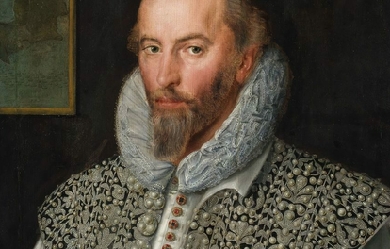
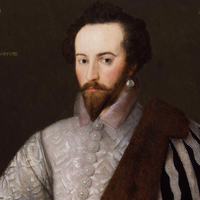
Sir Walter Ralegh (or Raleigh), British explorer, poet and historian, was born probably in 1552, though the date is not quite certain. His father, Walter Ralegh of Fardell, in the parish of Cornwood, near Plymouth, was a country gentleman of old family, but of reduced estate. Walter Ralegh the elder was three times married. His famous son was the child of his third marriage with Catherine, daughter of Sir Philip Champernown of Modbury, and widow of Otho Gilbert of Compton. By her first marriage she had three sons, John, Humphrey and Adrian Gilbert.

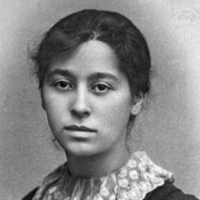
Amy Judith Levy (10 November 1861– 10 September 1889) was a British essayist, poet, and novelist best remembered for her literary gifts; her experience as the first Jewish woman at Cambridge University and as a pioneering woman student at Newnham College, Cambridge; her feminist positions; her friendships with others living what came later to be called a “new woman” life, some of whom were lesbians; and her relationships with both women and men in literary and politically activist circles in London during the 1880s. Biography Levy was born in Clapham, an affluent district of London, on November 10, 1861, to Lewis and Isobel Levy. She was the second of seven children born into a Jewish family with a “casual attitude toward religious observance” who sometimes attended a Reform synagogue in Upper Berkeley Street. As an adult, Levy continued to identify herself as Jewish and wrote for The Jewish Chronicle. Levy showed interest in literature from an early age. At 13, she wrote a criticism of Elizabeth Barrett Browning’s feminist work Aurora Leigh; at 14, Levy’s first poem, “Ida Grey: A Story of Woman’s Sacrifice”, was published in the journal Pelican. Her family was supportive of women’s education and encouraged Amy’s literary interests; in 1876, she was sent to Brighton and Hove High School and later studied at Newnham College, Cambridge. Levy was the first Jewish student at Newnham when she arrived in 1879 but left before her final year without taking her exams. Her circle of friends included Clementina Black, Dollie Radford, Eleanor Marx (daughter of Karl Marx), and Olive Schreiner. While travelling in Florence in 1886, Levy met Vernon Lee, a fiction writer and literary theorist six years her senior, and fell in love with her. Both women would go on to write works with themes of sapphic love. Lee inspired Levy’s poem “To Vernon Lee.” Literary career The Romance of a Shop (1888), Levy’s first novel, is regarded as an early “New Woman” novel and depicts four sisters who experience the difficulties and opportunities afforded to women running a business in 1880s London, Levy wrote her second novel, Reuben Sachs (1888), to fill the literary need for “serious treatment... of the complex problem of Jewish life and Jewish character”, which she identified and discussed in her 1886 article “The Jew in Fiction.” Levy wrote stories, essays, and poems for popular or literary periodicals; the stories “Cohen of Trinity” and “Wise in Their Generation”, both published in Oscar Wilde’s magazine The Woman’s World, are among her most notable. In 1886, Levy began writing a series of essays on Jewish culture and literature for The Jewish Chronicle, including The Ghetto at Florence, The Jew in Fiction, Jewish Humour, and Jewish Children. Levy’s works of poetry, including the daring A Ballad of Religion and Marriage, reveal her feminist concerns. Xantippe and Other Verses (1881) includes “Xantippe”, a poem in the voice of Socrates’s wife; the volume A Minor Poet and Other Verse (1884) includes more dramatic monologues as well as lyric poems. Her final book of poems, A London Plane-Tree (1889), contains lyrics that are among the first to show the influence of French symbolism. Suicide Levy suffered from episodes of major depression from an early age. In her later years, her depression worsened in connection to her distress surrounding her romantic relationships and her awareness of her growing deafness. Two months away from her 28th birthday, she committed suicide at the residence of her parents... [at] Endsleigh Gardens by inhaling carbon monoxide. Oscar Wilde wrote an obituary for her in Women’s World in which he praised her gifts.
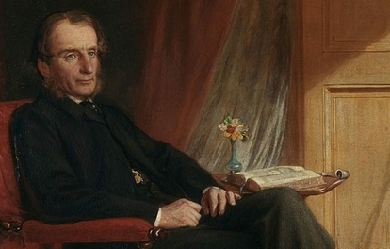
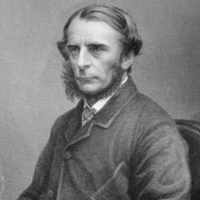
Charles Kingsley (12 June 1819– 23 January 1875) was a broad church priest of the Church of England, a university professor, historian and novelist. He is particularly associated with the West Country and northeast Hampshire. He was a friend and correspondent with Charles Darwin. Life and character Kingsley was born in Holne, Devon, the elder of two sons of the Reverend Charles Kingsley and his wife Mary Lucas Kingsley. His brother, Henry Kingsley, also became a novelist. He spent his childhood in Clovelly, Devon, where his father was Curate 1826–1832 and Rector 1832–1836, and at Barnack, Northamptonshire and was educated at Bristol Grammar School and Helston Grammar School before studying at King’s College London, and the University of Cambridge. Charles entered Magdalene College, Cambridge, in 1838, and graduated in 1842. He chose to pursue a ministry in the church. From 1844, he was rector of Eversley in Hampshire. In 1859 he was appointed chaplain to Queen Victoria. In 1860, he was appointed Regius Professor of Modern History at the University of Cambridge. In 1861 he became a private tutor to the Prince of Wales. In 1869 Kingsley resigned his Cambridge professorship and, from 1870 to 1873, was a canon of Chester Cathedral. While in Chester he founded the Chester Society for Natural Science, Literature and Art, which played an important part in the establishment of the Grosvenor Museum. In 1872 he accepted the Presidency of the Birmingham and Midland Institute and became its 19th President. In 1873 he was made a canon of Westminster Abbey. Kingsley died in 1875 and was buried in St Mary’s Churchyard in Eversley. Kingsley sat on the 1866 Edward Eyre Defence Committee along with Thomas Carlyle, John Ruskin, Charles Dickens and Alfred Lord Tennyson, where he supported Jamaican Governor Edward Eyre’s brutal suppression of the Morant Bay Rebellion against the Jamaica Committee. One of his daughters, Mary St Leger Kingsley, became known as a novelist under the pseudonym “Lucas Malet”. Kingsley’s life was written by his widow in 1877, entitled Charles Kingsley, his Letters and Memories of his Life. Kingsley also received letters from Thomas Huxley in 1860 and later in 1863, discussing Huxley’s early ideas on agnosticism. Influences and works Kingsley’s interest in history is shown in several of his writings, including The Heroes (1856), a children’s book about Greek mythology, and several historical novels, of which the best known are Hypatia (1853), Hereward the Wake (1865) and Westward Ho! (1855). He was sympathetic to the idea of evolution and was one of the first to welcome Charles Darwin’s book On the Origin of Species. He had been sent an advance review copy and in his response of 18 November 1859 (four days before the book went on sale) stated that he had “long since, from watching the crossing of domesticated animals and plants, learnt to disbelieve the dogma of the permanence of species.” Darwin added an edited version of Kingsley’s closing remarks to the next edition of his book, stating that “A celebrated author and divine has written to me that 'he has gradually learnt to see that it is just as noble a conception of the Deity to believe that He created a few original forms capable of self-development into other and needful forms, as to believe that He required a fresh act of creation to supply the voids caused by the action of His laws’.” When a heated dispute lasting three years developed over human evolution, Kingsley gently satirised the debate, known as the Great Hippocampus Question, as the “Great Hippopotamus Question”. Kingsley’s concern for social reform is illustrated in his classic, The Water-Babies, A Fairy Tale for a Land Baby (1863), a tale about a chimney sweep, which retained its popularity well into the 20th century. The story mentions the main protagonists in the scientific debate over human origins, rearranging his earlier satire as the “great hippopotamus test”. The book won a Lewis Carroll Shelf Award in 1963. His chief power as a novelist lay in his descriptive faculties. The descriptions of South American scenery in Westward Ho!, of the Egyptian desert in Hypatia, of the North Devon scenery in Two Years Ago, are brilliant; and the American scenery is even more vividly and more truthfully described when he had seen it only by the eye of his imagination than in his work At Last, which was written after he had visited the tropics. His sympathy with children taught him how to secure their interests. His version of the old Greek stories entitled The Heroes, and Water-babies and Madam How and Lady Why, in which he deals with popular natural history, take high rank among books for children. Kingsley was influenced by Frederick Denison Maurice, and was close to many Victorian thinkers and writers, including the Scottish writer George MacDonald. Kingsley was highly critical of Roman Catholicism and his argument, in print, with John Henry Newman, accusing him of untruthfulness and deceit, prompted the latter to write his Apologia Pro Vita Sua. Kingsley was racist towards the Irish and wrote in a letter to his wife from Ireland, 1860 "I am haunted by the human chimpanzees I saw along that hundred miles of horrible country [Ireland]...to see white chimpanzees is dreadful; if they were black one would not see it so much, but their skins, except where tanned by exposure, are as white as ours." Kingsley also wrote poetry and political articles, as well as several volumes of sermons. Kingsley coined the term pteridomania in his 1855 book Glaucus, or the Wonders of the Shore. Legacy Charles Kingsley’s novel Westward Ho! led to the founding of a village by the same name (the only place name in England with an exclamation mark) and inspired the construction of the Bideford, Westward Ho! and Appledore Railway. A hotel in Westward Ho! was named for and opened by him. A hotel opened in 1897 in Bloomsbury, London, was named after Kingsley. The hotel was founded by teetotallers who admired Kingsley for his political views and his ideas on social reform. It still exists and is now known as The Kingsley by Thistle. Bibliography * Yeast, a novel (1848) * Saint’s Tragedy, a drama * Alton Locke, a novel (1849) * Twenty-five Village Sermons (1849) * Cheap Clothes and Nasty (1850) * Phaeton, or Loose Thoughts for Loose Thinkers (1852) * Sermons on National Subjects (1st series, 1852) * Hypatia, a novel (1853) * Glaucus, or the Wonders of the Shore (1855) * Sermons on National Subjects (2nd series, 1854) * Alexandria and her Schools (I854) * Westward Ho!, a novel (1855) * Sermons for the Times (1855) * The Heroes, Greek fairy tales (1856) * Two Years Ago, a novel (1857) * Andromeda and other Poems (1858) * The Good News of God, sermons (1859) * Miscellanies (1859) * Limits of Exact Science applied to History (Inaugural lectures, 1860) * Town and Country Sermons (1861) * Sermons on the Pentateuch (1863) * The Water-Babies (1863) * The Roman and the Teuton (1864) * David and other Sermons (1866) * Hereward the Wake: “Last of the English”, a novel (London: Macmillan, 1866) * The Ancient Régime (Lectures at the Royal Institution, 1867) * Water of Life and other Sermons (1867) * The Hermits (1869) * Madam How and Lady Why (1869) * At Last: a Christmas in the West Indies (1871) * Town Geology (1872) * Discipline and other Sermons (1872) * Prose Idylls (1873) * Plays and Puritans (1873) * Health and Education (1874) * Westminster Sermons (1874) * Lectures delivered in America (1875) References Wikipedia—https://en.wikipedia.org/wiki/Charles_Kingsley

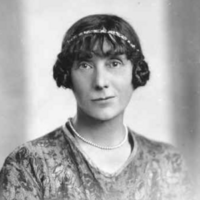
Jessie Pope (18 March 1868– 14 December 1941) was an English poet, writer and journalist, who remains best known for her patriotic motivational poems published during World War I. Wilfred Owen directed his 1917 poem Dulce et Decorum Est at Pope, whose literary reputation has faded into relative obscurity as those of war poets such as Owen and Siegfried Sassoon have grown. Early career Born in Leicester, she was educated at North London Collegiate School. She was a regular contributor to Punch, The Daily Mail and The Daily Express, also writing for Vanity Fair, Pall Mall Magazine and the Windsor. Prose editor A lesser-known literary contribution was Pope’s discovery of Robert Tressell’s novel The Ragged Trousered Philanthropists, when his daughter mentioned the manuscript to her after his death. Pope recommended it to her publisher, who commissioned her to abridge it before publication. This, a partial bowdlerisation, moulded it to a standard working-class tragedy while greatly downgrading its socialist political content. Verse Other works include Paper Pellets (1907), an anthology of humorous verse. She also wrote verses for children’s books, such as The Cat Scouts (Blackie, 1912) and the following eulogy to her friend, Bertram Fletcher Robinson (published in the Daily Express on Saturday 26 January 1907): Good Bye, kind heart; our benisons preceding, Shall shield your passing to the other side. The praise of your friends shall do your pleading In love and gratitude and tender pride. To you gay humorist and polished writer, We will not speak of tears or startled pain. You made our London merrier and brighter, God bless you, then, until we meet again! War poetry Pope’s war poetry was originally published in The Daily Mail; it encouraged enlistment and handed a white feather to youths who would not join the colours. Nowadays, this poetry is considered to be jingoistic, consisting of simple rhythms and rhyme schemes, with extensive use of rhetorical questions to persuade (and sometimes pressure) young men to join the war. This extract from Who’s for the Game? is typical in style: Who’s for the game, the biggest that’s played, The red crashing game of a fight? Who’ll grip and tackle the job unafraid? And who thinks he’d rather sit tight? Other poems, such as The Call (1915)– “Who’s for the trench– Are you, my laddie?”– expressed similar sentiments. Pope was widely published during the war, apart from newspaper publication producing three volumes: Jessie Pope’s War Poems (1915), More War Poems (1915) and Simple Rhymes for Stirring Times (1916). Criticism Her treatment of the subject is markedly in stark contrast to the anti-war stance of soldier poets such as Owen and Siegfried Sassoon. Many of these men found her work distasteful, Owen in particular. His poem Dulce et Decorum Est was a direct response to her writing, originally dedicated “To Jessie Pope etc.”. A later draft amended this as “To a certain Poetess”, later being removed completely to turn the poem into a general reproach on anyone sympathetic to the war. Pope is prominently remembered first for her pro-war poetry, but also as a representative of homefront female propagandists such as Mrs Humphry Ward, May Wedderburn Cannan, Emma Orczy, and entertainers such as Vesta Tilley. In particular, the poem “War Girls”, similar in structure to her pro-war poetry, states how "No longer caged and penned up/They’re going to keep their end up/Until the khaki soldier boys come marching back". Though largely unknown at the time, the War poets like Nichols, Sassoon and Owen, as well as later writers such as Edmund Blunden, Robert Graves, and Richard Aldington, have come to define the experience of the First World War. Reappraisal Pope’s work is today often presented in schools and anthologies as a counterpoint to the work of the War Poets, a comparison by which her pro-war work suffers both technically and politically. Some writers have attempted a partial re-appraisal of her work as an early pioneer of English women in the workforce, while still critical of both the content and artistic merit of her war poetry. Reminded that Pope was primarily a humourist and writer of light verse, her success in publishing and journalism during the pre-war era, when she was described as the “foremost woman humourist” of her day has been overshadowed by her propagandistic war poems. Her verse has been mined for sympathetic portrayals of the poor and powerless, of women urged to be strong and self-reliant. Her portrayal of the Suffragettes in a pair of counterpointed 1909 poems makes a case both for and against their actions. Later life After the war, Pope continued to rewrite, penning a short novel, poems—many of which continued to reflect upon the war and its aftermath—and books for children. She married a widower bank manager in 1929, when she was 61, and moved from London to Fritton, near Great Yarmouth. She died on 14 December 1941 in Devon.
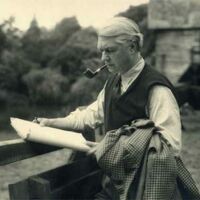
John Drinkwater (1 June 1882 – 25 March 1937) was an English poet and dramatist. Drinkwater was born in Leytonstone, London, and worked as an insurance clerk. In the period immediately before the First World War he was one of the group of poets associated with the Gloucestershire village of Dymock, along with Rupert Brooke and others. In 1919 he had his first major success with his play Abraham Lincoln. He followed it with others in a similar vein, including Mary Stuart and Oliver Cromwell. In 1924, his Lincoln play was adapted for a two-reel short film made by Lee DeForest and J. Searle Dawley featuring Frank McGlynn Sr. as Lincoln, and made in DeForest's Phonofilm sound-on-film process. He had published poetry since The Death of Leander in 1906; the first volume of his Collected Poems was published in 1923. He also compiled anthologies and wrote literary criticism (e.g. Swinburne: an estimate (1913)), and later became manager of Birmingham Repertory Theatre. He was married to Daisy Kennedy, the ex-wife of Benno Moiseiwitsch. Papers relating to John Drinkwater and collected by his stepdaughter are held at the University of Birmingham Special Collections. John Drinkwater made recordings in Columbia Records' International Educational Society Lecture series. They include Lecture 10 – a lecture on The Speaking of Verse (Four 78rpm sides, Cat no. D 40018-40019), and Lecture 70 John Drinkwater reading his own poems (Four 78rpm sides, Cat no. D 40140-40141). Death and commemoration Drinkwater died in London in 1937. He is buried at Piddington, Oxfordshire, where he had spent summer holidays as a child. A road in Leytonstone, formerly a 1960s council estate, is named after Drinkwater, as is a small development of modern houses in Piddington. References Wikipedia – en.wikipedia.org/wiki/John_Drinkwater_(playwright)


Brian Patten (born 7 February 1946) is an English poet Background Born near the Liverpool docks, Patten attended Sefton Park School in the Smithdown Road area of Liverpool, where he was noted for his essays and greatly encouraged in his work by Harry Sutcliffe, his form teacher. He left school at fifteen and began work for The Bootle Times writing a column on popular music. One of his first articles was on Roger McGough and Adrian Henri, two pop-oriented Liverpool poets who later joined Patten in a best-selling poetry anthology called The Mersey Sound, drawing popular attention to his own contemporary collections Little Johnny’s Confession (1967) and Notes to the Hurrying Man (1969). Patten received early encouragement from Philip Larkin. The collections Storm Damage (1988) and Armada (1996) are more varied, the latter featuring a sequence of poems concerning the death of his mother and memories of his childhood. Armada is perhaps Patten’s most mature and formal book, dispensing with much of the playfulness of former work. He has also written comic verse for children, notably Gargling With Jelly and Thawing Frozen Frogs. Patten’s style is generally lyrical and his subjects are primarily love and relationships. His 1981 collection Love Poems draws together his best work in this area from the previous sixteen years. Tribune has described Patten as “the master poet of his genre, taking on the intricacies of love and beauty with a totally new approach, new for him and for contemporary poetry.” Charles Causley once commented that he “reveals a sensibility profoundly aware of the ever-present possibility of the magical and the miraculous, as well as of the granite-hard realities. These are undiluted poems, beautifully calculated, informed– even in their darkest moments– with courage and hope.” Patten writes extensively for children as well as adults. He has been described as a highly engaging performer, and gives readings frequently. Over the years he has read alongside such poets as Pablo Neruda, Allen Ginsberg, Stevie Smith, Laurie Lee and Robert Lowell. His books have in recent years been translated into Italian, Spanish, German and Polish. His children’s novel Mr Moon’s Last Case won a special award from the Mystery Writers of America Guild. In 2002 Patten accepted the Cholmondeley Award for services to poetry. Together with Roger McGough and the late Adrian Henri, he was honoured with the Freedom of the City of Liverpool. Selected bibliography Poetry collections for adults * The Mersey Sound * Little Johnny’s Confession * Notes to the Hurrying Man * The Irrelevant Song * Vanishing Trick * Grave Gossip * Love Poems * Storm Damage * Grinning Jack * Armada * Selected Poems Penguin Books * The new Collected Love Poems * The projectionist’s nightmare * Geography lesson Books for children * The Elephant and the Flower * Jumping Mouse * Emma’s Doll * Gargling With Jelly * Mr Moon’s Last Case * Jimmy Tag-Along * Thawing Frozen Frogs * Juggling With Gerbils * The Story Giant * Impossible Parents, illustrated by Arthur Robins (Walker Books, 1994), OCLC 31708253 * The Impossible Parents Go Green, illus. Robins (Walker, 2000) * The Most Impossible Parents, illus. Robins (Walker, 2010) As editor * The Puffin Book of Utterly Brilliant Poetry * The Puffin Book of Modern Children’s Verse References Wikipedia—https://en.wikipedia.org/wiki/Brian_Patten
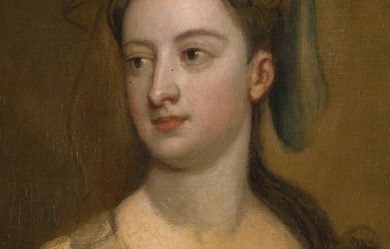
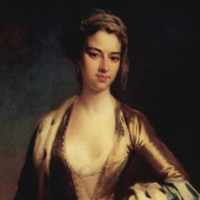
Lady Mary Wortley Montagu (baptized 26 May 1689– 21 August 1762) was an English aristocrat, letter writer and poet. Lady Mary is today chiefly remembered for her letters, particularly her letters from travels to the Ottoman Empire, as wife to the British ambassador to Turkey, which have been described by Billie Melman as “the very first example of a secular work by a woman about the Muslim Orient”. Aside from her writing, Lady Mary is also known for introducing and advocating for smallpox inoculation to Britain after her return from Turkey. Her writings usually address and challenge the hindering contemporary social attitudes towards women and their intellectual and social growth. Early life and education Lady Mary Wortley Montagu, Mary Pierrepont, was born in May 1689; her baptism took place on 26 May, at a few days old, at St. Paul’s Church in Covent Garden. She was the eldest child of Evelyn Pierrepont, 1st Duke of Kingston-upon-Hull, and his first wife, Mary (Fielding) Pierrepont. Her mother had three more children, two girls and a boy, before dying in October 1692. The children were raised by their Pierrepont grandmother until Mary was nine years old. Lady Mary was then passed to the care of her father upon her grandmother’s death. She began her education in her father’s home. Family holdings were extensive, including Thoresby Hall and Holme Pierrepont Hall in Nottinghamshire, and a house in West Dean in Wiltshire. To supplement the instruction of a despised governess, Lady Mary used the library in her father’s mansion, Thoresby Hall in Nottinghamshire, to “steal” her education, teaching herself Latin, a language reserved for men at the time. By 1705, at the age of fourteen or fifteen, Mary Pierrepont had written two albums filled with poetry, a brief epistolary novel, and a prose-and-verse romance modeled after Aphra Behn’s Voyage to the Isle of Love (1684). She also corresponded with two bishops, Thomas Tenison and Gilbert Burnet. Marriage and embassy to Ottoman Empire By 1710 Lady Mary had two possible suitors to choose from: Edward Wortley Montagu and Clotworthy Skeffington. Lady Mary corresponded with Edward Wortley Montagu via letters from 28 March 1710 to 2 May 1711. After May 1711 there was a break in contact between Lady Mary and Edward Wortley Montagu. Mary’s father, now Marquess of Dorchester, rejected Wortley Montagu as a prospect because he refused to entail his estate on a possible heir. Her father pressured her to marry Clotworthy Skeffington, heir to an Irish peerage. In order to avoid marriage to Skeffington, she eloped with Wortley. The marriage license is dated 17 August 1712, the marriage probably took place on 23 August 1712. The early years of Lady Mary Wortley Montagu’s married life were spent in the country. She had a son, Edward Wortley Montagu the younger, on 16 May 1713, in London. A couple of months later, on 1 July 1713 Lady Mary’s brother, aged twenty, died of smallpox and left behind two children. On 13 October 1714, her husband accepted post as Junior Commissioner of Treasury. When Lady Mary joined him in London, her wit and beauty soon made her a prominent figure at court. She was among the society of George I and the Prince of Wales, and counted amongst her friends Molly Skerritt, Lady Walpole, John, Lord Hervey, Mary Astell, Sarah Churchill, Duchess of Marlborough, Alexander Pope, John Gay, and Abbé Antonio Conti. In December 1715, Lady Mary contracted smallpox. She survived, but while she was ill someone circulated the satirical “court eclogues” she had been writing. One of the poems was read as an attack on Caroline, Princess of Wales, in spite of the fact that the “attack” was voiced by a character who was herself heavily satirized. In 1716, Edward Wortley Montagu was appointed Ambassador at Istanbul. In August 1716, Lady Mary accompanied him to Vienna, and thence to Adrianople and Istanbul. He was recalled in 1717, but they remained at Istanbul until 1718. While away from England, the Wortley Montagu’s had a daughter on 19 January 1718, who would grow up to be Mary, Countess of Bute. After an unsuccessful delegation between Austria and Turkey/Ottoman Empire, they set sail for England via the Mediterranean, and reached London on 2 October 1718. The story of this voyage and of her observations of Eastern life is told in Letters from Turkey, a series of lively letters full of graphic descriptions; Letters is often credited as being an inspiration for subsequent female travelers/writers, as well as for much Orientalist art. During her visit she was sincerely charmed by the beauty and hospitality of the Ottoman women she encountered, and she recorded her experiences in a Turkish bath. She also recorded a particularly amusing incident in which a group of Turkish women at a bath in Sofia, horrified by the sight of the stays she was wearing, exclaimed that "the husbands in England were much worse than in the East, for [they] tied up their wives in little boxes, the shape of their bodies". Lady Mary wrote about misconceptions previous travelers, specifically male travelers, had recorded about the religion, traditions and the treatment of women in the Ottoman Empire. Her gender and class status provided her with access to female spaces, that were closed off to males. Her personal interactions with Ottoman women enabled her to provide a more accurate account of Turkish women, their dress, habits, traditions, limitations and liberties. Lady Mary returned to the West with knowledge of the Ottoman practice of inoculation against smallpox, known as variolation. Ottoman smallpox inoculation Lady Mary Wortley Montagu defied convention most memorably by introducing smallpox inoculation to Western medicine after witnessing it during her travels and stay in the Ottoman Empire. In the Ottoman Empire, she visited the women in their segregated zenanas, making friends and learning about Turkish customs. There she witnessed the practice of inoculation against smallpox—variolation—which she called engrafting, and wrote home about it a number of her letters. Variolation used live smallpox virus in the pus taken from a smallpox blister in a mild case of the disease and introduced it into scratched skin of a previously uninfected person to promote immunity to the disease. Lady Mary’s brother had died of smallpox in 1713 and her own famous beauty had been marred by a bout with the disease in 1715. Lady Mary was eager to spare her children, thus, in March 1718 she had her nearly five-year-old son inoculated with the help of Embassy surgeon Charles Maitland. On her return to London, she enthusiastically promoted the procedure, but encountered a great deal of resistance from the medical establishment, because it was an Oriental folk treatment process. In April 1721, when a smallpox epidemic struck England, she had her daughter inoculated by Charles Maitland, the same physician who had inoculated her son at the Embassy in Turkey, and publicized the event. This was the first such operation done in Britain. She persuaded Princess Caroline to test the treatment. In August 1721, seven prisoners at Newgate Prison awaiting execution were offered the chance to undergo variolation instead of execution: they all survived and were released. Controversy over smallpox inoculation intensified, however, Caroline, Princess of Wales was convinced. The Princess’s two daughters were successfully inoculated in April 1722 by French-born surgeon Claudiius Amyand. In response to the general fear of inoculation, Lady Mary, under a pseudonym, wrote and published an article describing and advocating in favor of inoculation in September 1722. In later years, Edward Jenner, who was 13 years old when Lady Mary died, developed the much safer technique of vaccination using cowpox instead of smallpox. As vaccination gained acceptance, variolation gradually fell out of favor. Later years After returning to England, Lady Mary took less interest in court compared to her earlier years. Instead she was more focused on the upbringing of her children, reading, writing and editing her travel letters—which she then chose not to publish. Before starting for the East Lady Mary Wortley Montagu had met Alexander Pope, and during her Embassy travels with her husband, they wrote each other a series of letters. While Pope may have been fascinated by her wit and elegance, Lady Mary’s replies to his letters reveal that she was not equally smitten. Very few letters passed between them after Lady Mary’s return to England, and various reasons have been suggested for the subsequent estrangement. In 1728, Pope attacked Lady Mary in his Dunciad inaugurating a decade in which most of his publications made some sort of allegation against her. Lady Mary went through a series of trials with her children. In 1726 and 1727, Lady Mary’s son ran away from Westminster School several times. He was entrusted to a tutor with strict orders to keep young Edward Montagu abroad. In later years her son managed to return to England without permission and continued to have a strained relationship with both his parents. In August 1736, Lady Mary’s daughter, married John Stuart, 3rd Earl of Bute, despite her parent’s disapproval of the match. The same year Lady Mary met and fell in love with Francesco Algarotti, Count Algarotti, competing with an equally smitten John Hervey for the Count’s affections. Lady Mary wrote many letters to Algarotti in English and in French after his departure from England in September 1736. In July 1739 Lady Mary departed England ostensibly for health reasons declaring her intentions to winter in the south of France. In reality, she left to visit and live with Algarotti in Venice. Their relationship ended in 1741 after Lady Mary and Algarotti were both on diplomatic mission in Turin. Lady Mary stayed abroad and traveled extensively. After traveling to Venice, Florence, Rome, Genoa and Geneva, she finally settled in Avignon in 1742. She left Avignon in 1746 for Brescia, where she fell ill and stayed for nearly a decade, leaving for Lovere in 1754. After August 1756, she resided in Venice and Padua and saw Algarotti again in November. Lady Mary exchanged letters with her daughter, Lady Bute, discussing topics such as philosophy, literature, and the education of girls, as well as conveying details of her geographical and social surroundings. Lady Mary received news of her husband Edward Wortley Montagu’s death in 1761 and left Venice for England. En route to London, she handed her Embassy Letters to the Rev. Benjamin Sowden of Rotterdam, for safe keeping and “to be dispos’d of as he thinks proper”. Lady Mary reached London in January 1762, and died in the year of her return, on 21 August 1762. Important works and literary place Although Lady Mary Wortley Montagu is now best known for her Embassy Letters, she wrote poetry and essays as well. A number of Lady Mary’s poems and essays were printed in her lifetime, either without or with her permission, in newspapers, in miscellanies, and independently. Montagu did not intend to publish her poetry, but it did circulate widely, in manuscript, among members of her own social circle. Lady Mary was highly suspicious of any idealizing literary language. She wrote most often in heroic couplets, a serious poetic form to employ, and, according to Susan Staves,"excelled at “answer poems.”. Some of her widely anthologized poems include “Constantinople” and “Epistle from Mrs. Yonge to her Husband.” “Constantinople,” written January 1718, is a beautiful poem in heroic couplets describing Britain and Turkey through human history, and representing the state of mind “of knaves, coxcombs, the mob, and party zealous—all characteristic of the London of her time.”. “Epistle from Mrs. Yonge to her Husband,” written 1724, stages a letter from Mrs. Yonge to her libertine husband and exposes the social double standard which led to the shaming and distress of Mrs. Yonge after her divorce. In 1737 and 1738, Lady Mary published anonymously a political periodical called the Nonsense of Common-Sense, supporting the Robert Walpole government (the title was a reference to a journal of the liberal opposition entitled Common Sense). She wrote six Town Eclogues. She wrote notable letters describing her travels through Europe and the Ottoman Empire; these appeared after her death in three volumes. Lady Mary corresponded with Anne Wortley and wrote courtship letters to her future husband Edward Wortley Montagu, as well as love letters to Francesco Algarotti. She corresponded with notable writers, intellectuals and aristocrats of her day. She wrote gossip letters and letters berating the vagaries of fashionable people to her sister, Lady Mar, and exchanged intellectual letters with her adult daughter, Lady Bute. Although, not published during her lifetime, her letters from Turkey were clearly intended for print. She revised them extensively and gave a transcript to the Rev. Benjamin Sowden in Rotterdam in 1761. During the twentieth century Lady Mary’s letters were edited separately from her essays, poems and plays. Montagu’s Turkish letters were to prove an inspiration to later generations of European women travelers and writers. In particular, Montagu staked a claim to the authority of women’s writing, due to their ability to access private homes and female-only spaces where men were not permitted. The title of her published letters refers to “Sources that Have Been Inaccessible to Other Travellers”. The letters themselves frequently draw attention to the fact that they present a different (and, Montagu asserts, more accurate) description than that provided by previous (male) travelers: “You will perhaps be surpriz’d at an Account so different from what you have been entertaind with by the common Voyage-writers who are very fond of speaking of what they don’t know.”. Montagu provides an intimate description of the women’s bathhouse in Sofia, in which she derides male descriptions of the bathhouse as a site for unnatural sexual practices, instead insisting that it was “the Women’s coffee house, where all the news of the Town is told, Scandal invented, etc”. However, Montagu’s detailed descriptions of nude Oriental beauties provided inspiration for male artists such as Ingres, who restored the explicitly erotic content that Montagu had denied. In general, Montagu dismisses the quality of European travel literature of the 18th century as nothing more than "trite observations…superficial…[of] boys [who] only remember where they met with the best wine or the prettyest women.". Montagu’s Turkish letters were frequently cited by imperial women travelers, more than a century after her journey. Such writers cited Montagu’s assertion that women travelers could gain an intimate view of Turkish life that was not available to their male counterparts. However, they also added corrections or elaborations to her observations. In 1739 a book was printed by an unknown author under the pseudonym “Sophia, a person of quality”, titled Woman not Inferior to Man. This book is often attributed to Lady Mary. Her Letters and Works were published in 1837. Montagu’s octogenarian granddaughter Lady Louisa Stuart contributed to this, anonymously, an introductory essay called Biographical Anecdotes of Lady M. W. Montagu, from which it was clear that Stuart was troubled by her grandmother’s focus on sexual intrigues and did not see Lady Mary Wortley Montagu’s Account of the Court of George I at his Accession as history. However, Montagu’s historical observations, both in the “Anecdotes” and the “Turkish Embassy Letters,” prove quite accurate when put in context. Despite the availability of her work in print and the revival efforts of Feminist scholars, the complexity and brilliance of Lady Mary Wortley Montagu’s extensive body of work has not yet been recognized to the fullest.

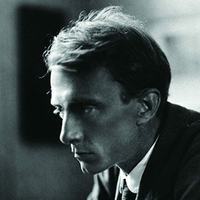
Philip Edward Thomas (3 March 1878– 9 April 1917) was a British poet, essayist, and novelist. He is commonly considered a war poet, although few of his poems deal directly with his war experiences, and his career in poetry only came after he had already been a successful writer and literary critic. In 1915, he enlisted in the British Army to fight in the First World War and was killed in action during the Battle of Arras in 1917, soon after he arrived in France. Life and career Early life Thomas was born in Lambeth, London. He was educated at Battersea Grammar School, St Paul’s School in London and Lincoln College, Oxford. His family were mostly Welsh. In June 1899 he married Helen Berenice Noble (1878-1967), in Fulham, while still an undergraduate, and determined to live his life by the pen. He then worked as a book reviewer, reviewing up to 15 books every week. He was already a seasoned writer by the outbreak of war, having published widely as a literary critic and biographer as well writing on the countryside. He also wrote a novel, The Happy-Go-Lucky Morgans (1913), a “book of delightful disorder”. Thomas worked as literary critic for the Daily Chronicle in London and became a close friend of Welsh tramp poet W. H. Davies, whose career he almost single-handedly developed. From 1905, Thomas lived with his wife Helen and their family at Elses Farm near Sevenoaks, Kent. He rented to Davies a tiny cottage nearby, and nurtured his writing as best he could. On one occasion, Thomas even had to arrange for the manufacture, by a local wheelwright, of a makeshift wooden leg for Davies. Even though Thomas thought that poetry was the highest form of literature and regularly reviewed it, he only became a poet himself at the end of 1914 when living at Steep, East Hampshire, and initially published his poetry under the name Edward Eastaway. Frost in particular encouraged Thomas (then more famous as a critic) to write poetry, and their friendship was so close that the two planned to reside side by side in the United States. By August 1914, the village of Dymock in Gloucestershire had become the residence of a number of literary figures, including Lascelles Abercrombie, Wilfrid Gibson and American poet Robert Frost. Edward Thomas was a visitor at this time. Thomas immortalised the (now-abandoned) railway station at Adlestrop in a poem of that name after his train made a stop at the Cotswolds station on 24 June 1914, shortly before the outbreak of the First World War. War service Thomas enlisted in the Artists Rifles in July 1915, despite being a mature married man who could have avoided enlisting. He was unintentionally influenced in this decision by his friend Frost, who had returned to the U.S. but sent Thomas an advance copy of “The Road Not Taken”. The poem was intended by Frost as a gentle mocking of indecision, particularly the indecision that Thomas had shown on their many walks together; however, most audiences took the poem more seriously than Frost intended, and Thomas similarly took it seriously and personally, and it provided the last straw in Thomas’ decision to enlist. Thomas was promoted corporal, and in November 1916 was commissioned into the Royal Garrison Artillery as a second lieutenant. He was killed in action soon after he arrived in France at Arras on Easter Monday, 9 April 1917. To spare the feelings of his widow Helen, she was told the fiction of a “bloodless death” i.e. that Thomas was killed by the concussive blast wave of one of the last shells fired as he stood to light his pipe and that there was no mark on his body. However, a letter from his commanding officer Franklin Lushington written in 1936 (and discovered many years later in an American archive) states that in reality the cause of Thomas’ death was due to being “shot clean through the chest”. W. H. Davies was devastated by the death and his commemorative poem “Killed In Action (Edward Thomas)” was included in Davies’s 1918 collection “Raptures”. Thomas is buried in the Commonwealth War Graves Cemetery at Agny in France (Row C, Grave 43). Personal life Thomas was survived by his wife, Helen, their son Merfyn and their two daughters Bronwen and Myfanwy. After the war, Thomas’s widow, Helen, wrote about her courtship and early married life with Edward in the autobiography As it Was (1926); later she added a second volume, World Without End (1931). Myfanwy later said that the books had been written by her mother as a form of therapy to help lift herself from the deep depression into which she had fallen following Thomas’s death. Helen’s short memoir My Memory of W. H. Davies was published in 1973, after her own death. In 1988, Helen’s writings were gathered into a book published under the title Under Storm’s Wing, which included As It Was and World Without End as well as a selection of other short works by Helen and her daughter Myfanwy and six letters sent by Robert Frost to her husband. Commemorations Thomas is commemorated in Poets’ Corner, Westminster Abbey, London, by memorial windows in the churches at Steep and at Eastbury in Berkshire and with a blue plaque at 14 Lansdowne Gardens in Stockwell, south London, where he was born. There is also a plaque dedicated to him at 113 Cowley Road, Oxford, where he lodged before entering Lincoln College. East Hampshire District Council have created a “literary walk” at Shoulder of Mutton Hill in Steep dedicated to Thomas, which includes a memorial stone erected in 1935. The inscription includes the final line from one of his essays: “And I rose up and knew I was tired and I continued my journey.” As “Philip Edward Thomas poet-soldier” he is commemorated, alongside "Reginald Townsend Thomas actor-soldier died 1918", who is buried at the spot, and other family members, at the North East Surrey (Old Battersea) Cemetery. He is the subject of the biographical play The Dark Earth and the Light Sky by Nick Dear, which premiered at the Almeida Theatre, London in November 2012, with Pip Carter as Thomas and Hattie Morahan as his wife Helen. In February 2013 his poem “Words” was chosen as the poem of the week by Carol Rumens in The Guardian Poetry Thomas’s poems are noted for their attention to the English countryside and a certain colloquial style. The short poem In Memoriam exemplifies how his poetry blends the themes of war and the countryside. On 11 November 1985, Thomas was among 16 Great War poets commemorated on a slate stone unveiled in Westminster Abbey’s Poet’s Corner. The inscription, written by fellow poet Wilfred Owen, reads: “My subject is War, and the pity of War. The Poetry is in the pity.” Thomas was described by British Poet Laureate Ted Hughes as “the father of us all.” At least nineteen of his poems were set to music by the Gloucester composer Ivor Gurney. Selected works Poetry collections * Six Poems (under pseudonym Edward Eastaway) Pear Tree Press, 1916. * Poems, Holt, 1917, which included “The Sign-Post” * Last Poems, Selwyn & Blount, 1918. * Collected Poems, Selwyn & Blount, 1920. * Two Poems, Ingpen & Grant, 1927. * The Poems of Edward Thomas, ed. R. George Thomas, Oxford University Press, 1978. * Edward Thomas: A Mirror of England, ed. Elaine Wilson, Paul & Co., 1985. * Edward Thomas: Selected Poems, ed. Ian Hamilton, Bloomsbury, 1995. * The Poems of Edward Thomas, ed. Peter Sacks, Handsel Books, 2003. * The Annotated Collected Poems, ed. Edna Longley, Bloodaxe Books, 2008. Prose fiction * The Happy-Go-Lucky Morgans (novel), Duckworth, 1913. Prose * In Pursuit of Spring (travel) Thomas Nelson and Sons, April 1914 Essays and collections * Horae Solitariae, Dutton, 1902. * Oxford, A & C Black, 1903. * Beautiful Wales, Black, 1905. * The Heart of England, Dutton, 1906. * The South Country, Dutton, 1906 (reissued by Tuttle, 1993). * Rest and Unrest, Dutton, 1910. * Light and Twilight, Duckworth, 1911. * The Icknield Way, Constable, 1913. * The Last Sheaf, Jonathan Cape, 1928. References to Thomas by other writers * In 1918 W. H. Davies published his poem Killed In Action (Edward Thomas) to mark the personal loss of his close friend and mentor. * Many poems about Thomas by other poets can be found in the books Elected Friends: Poems For and About Edward Thomas, (1997, Enitharmon Press) edited by Anne Harvey, and Branch-Lines: Edward Thomas and Contemporary Poetry, (2007, Enitharmon Press) edited by Guy Cuthbertson and Lucy Newlyn. * Norman Douglas considered Thomas handicapped in life through lacking “a little touch of bestiality, a little je-m’en-fous-t-ism. He was too scrupulous”. * In his 1980 autobiography, Ways of Escape, Graham Greene references Thomas’s poem “The Other” (about a man who seems to be following his own double from hotel to hotel) in describing his own experience of being bedeviled by an imposter. * Edward Thomas’s Collected Poems was one of Andrew Motion’s ten picks for the poetry section of the “Guardian Essential Library” in October 2002. * In his 2002 novel Youth, J.M. Coetzee has his main character, intrigued by the survival of pre-modernist forms in British poetry, ask himself: “What happened to the ambitions of poets here in Britain? Have they not digested the news that Edward Thomas and his world are gone for ever?” In contrast, Irish critic Edna Longley writes that Thomas’s Lob, a 150-line poem, “strangely preempts The Waste Land through verses like: ”This is tall Tom that bore / The logs in, and with Shakespeare in the hall / Once talked". * In his 1995 novel, Borrowed Time, the author Robert Goddard bases the home of the main character at Greenhayes in the village of Steep, where Thomas lived from 1913. Goddard weaves some of the feeling from Thomas’s poems into the mood of the story and also uses some quotes from Thomas’s works. * Will Self’s 2006 novel, The Book of Dave, has a quote from The South Country as the book’s epigraph: “I like to think how easily Nature will absorb London as she absorbed the mastodon, setting her spiders to spin the winding sheet and her worms to fill in the graves, and her grass to cover it pitifully up, adding flowers—as an unknown hand added them to the grave of Nero.” * The children’s author Linda Newbery has published a novel, “Lob” (David Fickling Books, 2010, illustrated by Pam Smy) inspired by the Edward Thomas’ poem of the same name and containing oblique references to other work by him. * Woolly Wolstenholme, formerly of UK rock band Barclay James Harvest, has used a humorous variation of Thomas’ poem Adlestrop on the first song of his 2004 live album, Fiddling Meanly, where he imagines himself in a retirement home and remembers “the name” of the location where the album was recorded. The poem was read at Wolstenholme’s funeral on 19 January 2011. * Stuart Maconie in his book Adventures On The High Teas mentions Thomas and his poem “Adlestrop”. Maconie visits the now abandoned and overgrown station which was closed by Beeching in 1966. * Robert MacFarlane, in his 2012 book The Old Ways, critiques Thomas and his poetry in the context of his own explorations of paths and walking as an analogue of human consciousness. * In his 2012 novel Sweet Tooth, Ian McEwan has a character invoke Thomas’s poem “Adlestrop,” as a “sweet, old-fashioned thing” and an example of “the sense of pure existence, of being suspended in space and time, a time before a cataclysmic war.” * The last years of Thomas’s life are explored in A Conscious Englishman, a 2013 biographical novel by Margaret Keeping, published by StreetBooks. * Pat Barker’s 1995 WW1 novel, The Ghost Road, Booker Prize winner and the third novel of her Regeneration Trilogy, has as its opening epigraph 4 lines from 'Roads’. * 'Now all roads lead to France/ And heavy is the tread/ Of the living; but the dead/ Returning lightly dance:’ References Wikipedia—https://en.wikipedia.org/wiki/Edward_Thomas_(poet)

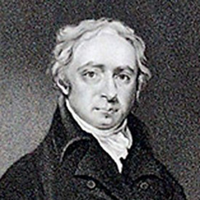
William Lisle Bowles (24 September 1762– 7 April 1850) was an English priest, poet and critic. Life and career Bowles was born at King’s Sutton, Northamptonshire, where his father was vicar. At the age of 14 he entered Winchester College, where the headmaster at the time was Dr Joseph Warton. In 1781 Bowles left as captain of the school, and went on to Trinity College, Oxford, where he had won a scholarship. Two years later he won the Chancellor’s prize for Latin verse. Bowles came from a line of Church of England clergymen. His great-grandfather Matthew Bowles (1652–1742), grandfather Dr Thomas Bowles (1696–1773) and father William Thomas Bowles (1728–86) had all been parish priests. After taking his degree at Oxford, Bowles followed his forebears into the Church of England, and in 1792, after serving as curate in Donhead St Andrew, was appointed vicar of Chicklade in Wiltshire. In 1797 he received the vicarage of Dumbleton in Gloucestershire, and in 1804 became vicar of Bremhill in Wiltshire, where he wrote the poem seen on Maud Heath’s statue. In the same year his bishop, John Douglas, collated him to a prebendal stall in Salisbury Cathedral. In 1818 he was made chaplain to the Prince Regent, and in 1828 he was elected residentiary canon of Salisbury. Works * In 1789 he published, in a very small quarto volume, Fourteen Sonnets, which were received with extraordinary favour, not only by the general public, but by such men as Samuel Taylor Coleridge and Wordsworth. * The Sonnets even in form were a revival, a return to an older and purer poetic style, and by their grace of expression, melodious versification, tender tone of feeling and vivid appreciation of the life and beauty of nature, stood out in strong contrast to the elaborated commonplaces which at that time formed the bulk of English poetry. Bowles said thereof Poetic trifles from solitary rambles whilst chewing the cud of sweet and bitter fancy, written from memory, confined to fourteen lines, this seemed best adapted to the unity of sentiment, the verse flowed in unpremeditated harmony as my ear directed but are far from being mere elegiac couplets. * The longer poems published by Bowles are not of a very high standard, though all are distinguished by purity of imagination, cultured and graceful diction, and great tenderness of feeling. The most extensive were The Spirit of Discovery (1804), which was mercilessly ridiculed by Lord Byron; The Missionary (1813); The Grave of the Last Saxon (1822); and St John in Patmos (1833). Bowles is perhaps more celebrated as a critic than as a poet.In 1806 he published an edition of Alexander Pope’s works with notes and an essay, in which he laid down certain canons as to poetic imagery which, subject to some modification, were later accepted, but which were received at the time with strong opposition by admirers of Pope and his style. The controversy brought into sharp contrast the opposing views of poetry, which may be roughly described as the natural and the artificial. * Bowles was an amiable, absent-minded, and rather eccentric man. His poems are characterised by refinement of feeling, tenderness, and pensive thought, but are deficient in power and passion. Bowles maintained that images drawn from nature are poetically finer than those drawn from art; and that in the highest kinds of poetry the themes or passions handled should be of the general or elemental kind, and not the transient manners of any society. These positions were attacked by Byron, Thomas Campbell, William Roscoe and others, while for a time Bowles was almost solitary. William Hazlitt and the Blackwood critics came to his assistance, and on the whole Bowles had reason to congratulate himself on having established certain principles which might serve as the basis of a true method of poetical criticism, and of having inaugurated, both by precept and by example, a new era in English poetry. Among other prose works from his prolific pen was a Life of Bishop Ken (two volumes, 1830–1831). Other works include Coombe Ellen and St. Michael’s Mount (1798), The Battle of the Nile (1799), and The Sorrows of Switzerland (1801). * Bowles also enjoyed considerable reputation as an antiquary, his principal work in that department being Hermes Britannicus (1828). His Poetical Works were collected in 1855 as part of the Library Edition of the British Poets, with a memoir by George Gilfillan. Reception * Bowles’ work was important to the young Samuel Taylor Coleridge: * Bowles was the cause in the 1820s of the Alexander Pope controversy into which George Gordon, Lord Byron was drawn. References Wikipedia—https://en.wikipedia.org/wiki/William_Lisle_Bowles
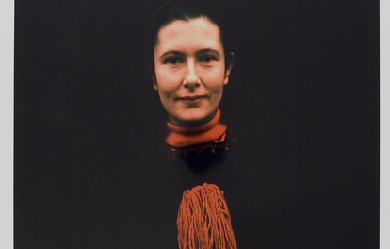
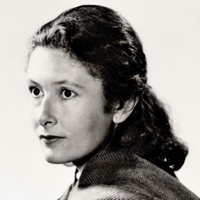
Denise Levertov (24 October 1923– 20 December 1997) was a British-born American poet. Levertov, who was educated at home, showed an enthusiasm for writing from an early age and studied ballet, art, piano and French as well as standard subjects. She wrote about the strangeness she felt growing up part Jewish, German, Welsh and English, but not fully belonging to any of these identities. She notes that it lent her a sense of being special rather than excluded: “I knew before I was ten that I was an artist-person and I had a destiny”.

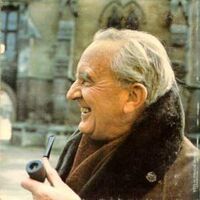
John Ronald Reuel Tolkien, 3 January 1892 – 2 September 1973) was an English writer, poet, philologist, and university professor who is best known as the author of the classic high-fantasy works The Hobbit, The Lord of the Rings, and The Silmarillion. He served as the Rawlinson and Bosworth Professor of Anglo-Saxon and Fellow of Pembroke College, Oxford, from 1925 to 1945 and Merton Professor of English Language and Literature and Fellow of Merton College, Oxford from 1945 to 1959.[1] He was at one time a close friend of C. S. Lewis—they were both members of the informal literary discussion group known as the Inklings. Tolkien was appointed a Commander of the Order of the British Empire by Queen Elizabeth II on 28 March 1972. After Tolkien's death, his son Christopher published a series of works based on his father's extensive notes and unpublished manuscripts, including The Silmarillion. These, together with The Hobbit and The Lord of the Rings form a connected body of tales, poems, fictional histories, invented languages, and literary essays about a fantasy world called Arda, and Middle-earth within it. Between 1951 and 1955, Tolkien applied the term legendarium to the larger part of these writings. While many other authors had published works of fantasy before Tolkien,[3] the great success of The Hobbit and The Lord of the Rings led directly to a popular resurgence of the genre. This has caused Tolkien to be popularly identified as the "father" of modern fantasy literature—or, more precisely, of high fantasy. In 2008, The Times ranked him sixth on a list of "The 50 greatest British writers since 1945". Forbes ranked him the 5th top-earning "dead celebrity" in 2009. Family origins Tolkien's paternal ancestors were middle-class craftsmen who made and sold clocks, watches and pianos in London and Birmingham. The Tolkien family had emigrated from Germany in the 18th century but had become "quickly intensely English". Stories told by his aunt, Grace Tolkien, claimed a relation with the House of Hohenzollern. "More prosaic" members of the family said that the Tolkiens had arrived in England in 1756, as refugees from Frederick the Great's invasion of the Electorate of Saxony during the Seven Years' War. Tolkien derived his surname from the German word tollkühn, meaning "foolhardy". Several families with the surname Tolkien or other spelling variants live in northwestern Germany, mainly in Lower Saxony and Hamburg. A German writer has suggested that the name is more likely to derive from the village Tolkynen, near Rastenburg, East Prussia (now in north-eastern Poland), although that village is far from Lower Saxony; its name is derived from the now-extinct Old Prussian language. Childhood John Ronald Reuel Tolkien was born on 3 January 1892 in Bloemfontein in the Orange Free State (now Free State Province in South Africa) to Arthur Reuel Tolkien (1857–1896), an English bank manager, and his wife Mabel, née Suffield (1870–1904). The couple had left England when Arthur was promoted to head the Bloemfontein office of the British bank for which he worked. Tolkien had one sibling, his younger brother, Hilary Arthur Reuel, who was born on 17 February 1894. As a child, he was bitten by a large baboon spider in the garden, an event some think later echoed in his stories, although Tolkien admitted no actual memory of the event and no special hatred of spiders as an adult. In another incident, a young family servant, who thought Tolkien a beautiful child, took the baby to his kraal to show him off, returning him the next morning. When he was three, he went to England with his mother and brother on what was intended to be a lengthy family visit. His father, however, died in South Africa of rheumatic fever before he could join them. This left the family without an income, so Tolkien's mother took him to live with her parents in Kings Heath, Birmingham. Soon after, in 1896, they moved to Sarehole (now in Hall Green), then a Worcestershire village, later annexed to Birmingham. He enjoyed exploring Sarehole Mill and Moseley Bog and the Clent, Lickey and Malvern Hills, which would later inspire scenes in his books, along with nearby towns and villages such as Bromsgrove, Alcester, and Alvechurch and places such as his aunt Jane's farm of Bag End, the name of which he used in his fiction. Mabel Tolkien taught her two children at home. Ronald, as he was known in the family, was a keen pupil. She taught him a great deal of botany and awakened in him the enjoyment of the look and feel of plants. Young Tolkien liked to draw landscapes and trees, but his favourite lessons were those concerning languages, and his mother taught him the rudiments of Latin very early. He could read by the age of four and could write fluently soon afterwards. His mother allowed him to read many books. He disliked Treasure Island and The Pied Piper and thought Alice's Adventures in Wonderland by Lewis Carroll was "amusing but disturbing". He liked stories about "Red Indians" and the fantasy works by George MacDonald. In addition, the "Fairy Books" of Andrew Lang were particularly important to him and their influence is apparent in some of his later writings. Mabel Tolkien was received into the Roman Catholic Church in 1900 despite vehement protests by her Baptist family, which stopped all financial assistance to her. In 1904, when J.R.R. Tolkien was 12, his mother died of acute diabetes at Fern Cottage in Rednal, which she was renting. She was then about 34 years of age, about as old as a person with diabetes mellitus type 1 could live without treatment — insulin would not be discovered until two decades later. Nine years after her death, Tolkien wrote, "My own dear mother was a martyr indeed, and it is not to everybody that God grants so easy a way to his great gifts as he did to Hilary and myself, giving us a mother who killed herself with labour and trouble to ensure us keeping the faith." Prior to her death, Mabel Tolkien had assigned the guardianship of her sons to her close friend, Fr. Francis Xavier Morgan of the Birmingham Oratory, who was assigned to bring them up as good Catholics. In a 1965 letter to his son Michael, Tolkien recalled the influence of the man whom he always called "Father Francis" : "He was an upper-class Welsh-Spaniard Tory, and seemed to some just a pottering old gossip. He was—and he was not. I first learned charity and forgiveness from him; and in the light of it pierced even the 'liberal' darkness out of which I came, knowing more [i.e. Tolkien having grown up knowing more] about 'Bloody Mary' than the Mother of Jesus—who was never mentioned except as an object of wicked worship by the Romanists." After his mother's death, Tolkien grew up in the Edgbaston area of Birmingham and attended King Edward's School, Birmingham, and later St. Philip's School. In 1903, he won a Foundation Scholarship and returned to King Edward's. While a pupil there, Tolkien was one of the cadets from the school's Officers Training Corps who helped "line the route" for the 1910 coronation parade of King George V. Like the other cadets from King Edward's, Tolkien was posted just outside the gates of Buckingham Palace. In Edgbaston, Tolkien lived there in the shadow of Perrott's Folly and the Victorian tower of Edgbaston Waterworks, which may have influenced the images of the dark towers within his works.[31][32] Another strong influence was the romantic medievalist paintings of Edward Burne-Jones and the Pre-Raphaelite Brotherhood; the Birmingham Museum and Art Gallery had a large collection of works on public display. Youth While in his early teens, Tolkien had his first encounter with a constructed language, Animalic, an invention of his cousins, Mary and Marjorie Incledon. At that time, he was studying Latin and Anglo-Saxon. Interest in the language soon died away, but Mary and others, including Tolkien himself, invented a new and more complex language called Nevbosh. The next constructed language he came to work with, Naffarin, would be his own creation. In 1911, while they were at King Edward's School, Birmingham, Tolkien and three friends, Rob Gilson, Geoffrey Bache Smith and Christopher Wiseman, formed a semi-secret society they called the T.C.B.S. The initials stood for Tea Club and Barrovian Society, alluding to their fondness for drinking tea in Barrow's Stores near the school and, secretly, in the school library. After leaving school, the members stayed in touch and, in December 1914, they held a "council" in London at Wiseman's home. For Tolkien, the result of this meeting was a strong dedication to writing poetry. In 1911, Tolkien went on a summer holiday in Switzerland, a trip that he recollects vividly in a 1968 letter, noting that Bilbo's journey across the Misty Mountains ("including the glissade down the slithering stones into the pine woods") is directly based on his adventures as their party of 12 hiked from Interlaken to Lauterbrunnen and on to camp in the moraines beyond Mürren. Fifty-seven years later, Tolkien remembered his regret at leaving the view of the eternal snows of Jungfrau and Silberhorn ("the Silvertine (Celebdil) of my dreams"). They went across the Kleine Scheidegg to Grindelwald and on across the Grosse Scheidegg to Meiringen. They continued across the Grimsel Pass, through the upper Valais to Brig and on to the Aletsch glacier and Zermatt. In October of the same year, Tolkien began studying at Exeter College, Oxford. He initially studied Classics but changed his course in 1913 to English Language and Literature, graduating in 1915 with first-class honours in his final examinations. Family The Tolkiens had four children: John Francis Reuel Tolkien (17 November 1917 – 22 January 2003), Michael Hilary Reuel Tolkien (22 October 1920 – 27 February 1984), Christopher John Reuel Tolkien (born 21 November 1924) and Priscilla Mary Anne Reuel Tolkien (born 18 June 1929). Tolkien was very devoted to his children and sent them illustrated letters from Father Christmas when they were young. Each year more characters were added, such as the North Polar Bear (Father Christmas's helper), the Snow Man (his gardener), Ilbereth the elf (his secretary), and various other, minor characters. The major characters would relate tales of Father Christmas's battles against goblins who rode on bats and the various pranks committed by the North Polar Bear. References Wikipedia—http://en.wikipedia.org/wiki/J._R._R._Tolkien
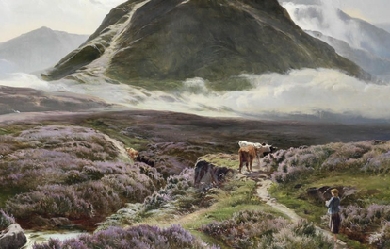
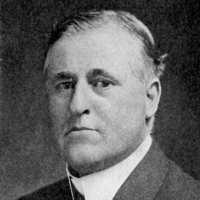
Sir William Watson (2 August 1858– 11 August 1935) was an English poet, popular in his time for the celebratory content, and famous for the controversial political content, of his verse. Initially popularly recognised, he was then neglected because of changing tastes. Poet Watson was born in Burley, in present-day West Yorkshire. He was a prolific poet of the 1890s, and a contributor to The Yellow Book, though without “decadent” associations, and on the traditionalist wing of English poetry. His reputation was established in 1891, with the publication of “Wordsworth’s Grave”. On Alfred Tennyson’s death in 1892, he was a strong candidate to be his eulogist, the commission resulting in his “Lachrymae Musarum”. He suffered a breakdown later in 1892 and was passed over for the position of Poet Laureate in favour of Alfred Austin. Watson regained his standing in 1894 with the publication of Odes and other poems, which included “Vita Nuova”, expressing gratitude for his recovery. He courted controversy later in the decade with a attack on Turkey (The Purple East, 1896) and then later again with anti-Boer War poems. After Austin’s death in 1913, Prime Minister Asquith considered him for the laureateship, despite the fact that he had written a cruel pasquil against his wife Margot Asquith ('She is not old, she is not young/ The woman with the serpent’s tongue’); but because of the contentious nature of his political poems, he was again passed over, this time for Robert Bridges. Perhaps in exchange for writing a panegyric of Lloyd George, or perhaps because of his support of the Great War effort, he was awarded a knighthood in 1917. After World War I Watson was largely forgotten. A number of literary men in 1935 issued a public appeal for a fund to support him in his old age; he died the same year. Family Watson married Adeline Maureen Pring in 1909; they had two daughters. Works * The Prince’s Quest and Other Poems (1880) * Epigrams of Art, Life and Nature (1884) * Wordsworth’s Grave and Other Poems (1890) * Poems (1892) * Lachrymae Musarum (1892) * Lyric Love: An Anthology (1892) * Eloping Angels: A Caprice (1893) * The Poems of William Watson (1893) * Excursions in Criticism: Being Some Prose Recreations Of A Rhymer (1893) * Odes and Other Poems (1894) * The Father of the Forest & Other Poems (1895) * The Purple East: A Series Of Sonnets On England’s Desertion of Armenia (1896) * The Year of Shame (1897) * The Hope of the World and Other Poems (1898) * The Collected Poems of William Watson (1899) * Ode on the Coronation of King Edward VII (1902) * Selected Poems (1903) * For England. Poems Written During Estrangement (1904) * New Poems (1909) * Sable and Purple (1910) * The Heralds of the Dawn: A Play in Eight Scenes (1912) * The Muse in Exile (1913) * Pencraft. A Plea For The Older Ways (1916) * The Man Who Saw: and Other Poems Arising out of the War (1917) * Retrogression and Other Poems (1917) * The Superhuman Antagonists and Other Poems (1919) * "Ireland Unfreed. Poems and Verses written in the early months of 1921" (1921) References Wikipedia—https://en.wikipedia.org/wiki/William_Watson_(poet)
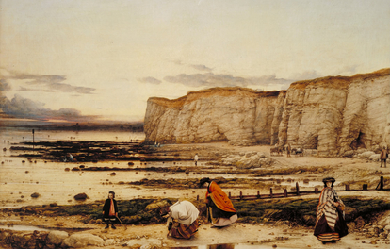
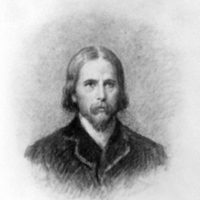
Sydney Thompson Dobell (5 April 1824– 22 August 1874) was an English poet and critic, and a member of the so-called Spasmodic school. He was born at Cranbrook, Kent. His father, John Dobell, was a wine merchant, his mother a daughter of Samuel Thompson (1766–1837), a London political reformer. The family moved to Cheltenham when Dobell was twelve years old. He was educated privately, and never attended either school or university. He refers to this in some lines on Cheltenham College in imitation of Chaucer, written in his eighteenth year. After a five-year engagement he married, in 1844, Emily Fordham, a lady of good family. Acquaintance with James Stansfeld (subsequently Sir James Stansfeld) and with the Birmingham preacher-politician George Dawson fed the young enthusiast’s ardour for the liberalism of the day, and later led to the foundation of the Society of the Friends of Italy.
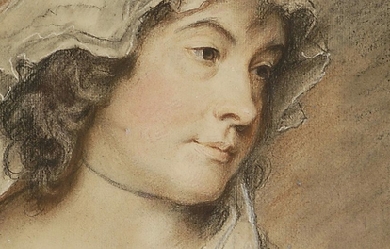
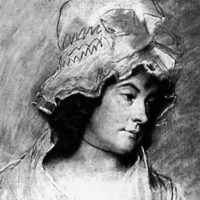
Charlotte Turner Smith (4 May 1749– 28 October 1806) was an English Romantic poet and novelist. She initiated a revival of the English sonnet, helped establish the conventions of Gothic fiction, and wrote political novels of sensibility. Smith was born into a wealthy family and received a typical education for a woman during the late 18th century. However, her father’s reckless spending forced her to marry early. In a marriage that she later described as prostitution, she was given by her father to the violent and profligate Benjamin Smith. Their marriage was deeply unhappy, although they had twelve children together. Charlotte joined Benjamin in debtor’s prison, where she wrote her first book of poetry, Elegiac Sonnets. Its success allowed her to help pay for Benjamin’s release. Benjamin’s father attempted to leave money to Charlotte and her children upon his death, but legal technicalities prevented her from ever acquiring it. Charlotte Smith eventually left Benjamin and began writing to support their children. Smith’s struggle to provide for her children and her frustrated attempts to gain legal protection as a woman provided themes for her poetry and novels; she included portraits of herself and her family in her novels as well as details about her life in her prefaces. Her early novels are exercises in aesthetic development, particularly of the Gothic and sentimentality. “The theme of her many sentimental and didactic novels was that of a badly married wife helped by a thoughtful sensible lover” (Smith’s entry in British Authors Before 1800: A Biographical Dictionary Ed. Stanley Kunitz and Howard Haycraft. New York: H.W. Wilson, 1952. pg. 478.) Her later novels, including The Old Manor House, often considered her best, support the ideals of the French Revolution. Smith was a successful writer, publishing ten novels, three books of poetry, four children’s books, and other assorted works, over the course of her career. She always saw herself as a poet first and foremost, however, as poetry was considered the most exalted form of literature at the time. Scholars credit Smith with transforming the sonnet into an expression of woeful sentiment that would pave the way for poets such as Coleridge, Wordsworth, Shelly and Keats. Smith’s poetry and prose was praised by contemporaries such as Romantic poets William Wordsworth and Samuel Taylor Coleridge as well as novelist Walter Scott. Coleridge, in 1796, even remarked that “those sonnets appear to me the most exquisite, in which moral Sentiments, Affections, or Feelings, are deduced from, and associated with the scenery of Nature”. After 1798, Smith’s popularity waned and by 1803 she was destitute and ill—she could barely hold a pen. She had to sell her books to pay off her debts. In 1806, Smith died. Largely forgotten by the middle of the 19th century, her works have now been republished and she is recognized as an important Romantic writer. Early life Smith was born on 4 May 1749 in London and baptized on 12 June; she was the oldest child of well-to-do Nicholas Turner and Anna Towers. Her two younger siblings, Nicholas and Catherine Ann, were born within the next five years. Smith’s childhood was shaped by her mother’s early death (probably in giving birth to Catherine) and her father’s reckless spending. After losing his wife, Nicholas Turner travelled and the children were raised by Lucy Towers, their maternal aunt (when exactly their father returned is unknown). At the age of six, Charlotte went to school in Chichester and took drawing lessons from the painter George Smith. Two years later, she, her aunt, and her sister moved to London and she attended a girls school in Kensington where she learned dancing, drawing, music, and acting. She loved to read and wrote poems, which her father encouraged. She even submitted a few to the Lady’s Magazine for publication, but they were not accepted. Marriage and first publication Smith’s father encountered financial difficulties upon his return to England and he was forced to sell some of the family’s holdings and to marry the wealthy Henrietta Meriton in 1765. Smith entered society at the age of twelve, leaving school and being tutored at home. On 23 February 1765, at the age of fifteen, she married Benjamin Smith, the son of Richard Smith, a wealthy West Indian merchant and a director of the East India Company. The proposal was accepted for her by her father; forty years later, Smith condemned her father’s action, which she wrote had turned her into a “legal prostitute”. Smith’s marriage was unhappy. She detested living in commercial Cheapside (the family later moved to Southgate and Tottenham) and argued with her in-laws, who she believed were unrefined and uneducated. They, in turn, mocked her for spending time reading, writing, and drawing. Even worse, Benjamin proved to be violent, unfaithful, and profligate. Only her father-in-law, Richard, appreciated her writing abilities, although he wanted her to use them to further his business interests. Richard Smith owned plantations in Barbados and he and his second wife brought five slaves to England, who, along with their descendants, were included as part of the family property in his will. Although Charlotte Smith later argued against slavery in works such as The Old Manor House (1793) and “Beachy Head”, she herself benefited from the income and slave labor of Richard Smith’s plantations. In 1766, Charlotte and Benjamin had their first child, who died the next year just days after the birth of their second, Benjamin Berney (1767–77). Between 1767 and 1785, the couple had ten more children: William Towers (born 1768), Charlotte Mary (born c. 1769), Braithwaite (born 1770), Nicholas Hankey (1771–1837), Married Anni Petroose (1779–1843), Charles Dyer (born 1773), Anna Augusta (1774–94), Lucy Eleanor (born 1776), Lionel (1778–1842), Harriet (born c. 1782), and George (born c. 1785). Only six of Smith’s children survived her. Smith assisted in the family business that her husband had abandoned by helping Richard Smith with his correspondence. She persuaded Richard to set Benjamin up as a gentleman farmer in Hampshire and lived with him at Lys Farm from 1774 until 1783. Worried about Charlotte’s future and that of his grandchildren and concerned that his son would continue his irresponsible ways, Richard Smith willed the majority of his property to Charlotte’s children. However, because he had drawn up the will himself, the documents contained legal problems. The inheritance, originally worth nearly £36,000, was tied up in chancery after his death in 1776 for almost forty years. Smith and her children saw little of it. (It has been proposed that this real case may have inspired the famous fictional case of Jarndyce and Jarndyce, in Dickens’s Bleak House.) In fact, Benjamin illegally spent at least a third of the legacy and ended up in King’s Bench Prison in December 1783. Smith moved in with him and it was in this environment that she wrote and published her first work, Elegiac Sonnets (1784). Elegiac Sonnets achieved instant success, allowing Charlotte to pay for their release from prison. Smith’s sonnets helped initiate a revival of the form and granted an aura of respectability to her later novels (poetry was considered the highest art form at the time). Smith revised Elegiac Poems several times over the years, eventually creating a two-volume work. Novelist After Benjamin Smith was released from prison, the entire family moved to Dieppe, France to avoid further creditors. Charlotte returned to negotiate with them, but failed to come to an agreement. She went back to France and in 1784 began translating works from French into English. In 1787 she published The Romance of Real Life, consisting of translated selections from François Gayot de Pitaval’s trials. She was forced to withdraw her other translation, Manon Lescaut, after it was argued that the work was immoral and plagiarized. In 1786, she published it anonymously. In 1785, the family returned to England and moved to Woolbeding House near Midhurst, Sussex. Smith’s relationship with her husband did not improve and on 15 April 1787, after twenty-two years of marriage, she left him. She wrote that she might “have been contented to reside in the same house with him”, had not “his temper been so capricious and often so cruel” that her “life was not safe”. When Charlotte left Benjamin, she did not secure a legal agreement that would protect her profits—he would have access to them under English primogeniture laws. Smith knew that her children’s future rested on a successful settlement of the lawsuit over her father-in-law’s will, therefore she made every effort to earn enough money to fund the suit and retain the family’s genteel status. Smith claimed the position of gentlewoman, signing herself “Charlotte Smith of Bignor Park” on the title page of Elegiac Sonnets. All of her works were published under her own name, “a daring decision” for a woman at the time. Her success as a poet allowed her to make this choice. Throughout her career, Smith identified herself as a poet. Although she published far more prose than poetry and her novels brought her more money and fame, she believed poetry would bring her respectability. As Sarah Zimmerman claimed in the Oxford Dictionary of National Biography, “She prized her verse for the role it gave her as a private woman whose sorrows were submitted only reluctantly to the public.” After separating from her husband, Smith moved to a town near Chichester and decided to write novels, as they would make her more money than poetry. Her first novel, Emmeline (1788), was a success, selling 1500 copies within months. She wrote nine more novels in the next ten years: Ethelinde (1789), Celestina (1791), Desmond (1792), The Old Manor House (1793), The Wanderings of Warwick (1794), The Banished Man (1794), Montalbert (1795), Marchmont (1796), and The Young Philosopher (1798). Smith began her career as a novelist during the 1780s at a time when women’s fiction was expected to focus on romance and to foreground “a chaste and flawless heroine subjected to repeated melodramatic distresses until reinstated in society by the virtuous hero”. Although Smith’s novels employed this structure, they also incorporated political commentary, particularly support of the French Revolution, through the voices of male characters. At times, she challenged the typical romance plot by including “narratives of female desire” or “tales of females suffering despotism”. Smith’s novels contributed to the development of Gothic fiction and the novel of sensibility. Smith’s novels are autobiographical. While a common device at the time, Antje Blank writes in The Literary Encyclopedia, “few exploited fiction’s potential of self-representation with such determination as Smith”. For example, Mr. and Mrs. Stafford in Emmeline are portraits of Charlotte and Benjamin. The prefaces to Smith’s novels told the story of her own struggles, including the deaths of several of her children. According to Zimmerman, "Smith mourned most publicly for her daughter Anna Augusta, who married an émigré... and died aged twenty in 1795." Smith’s prefaces positioned her as both a suffering sentimental heroine as well as a vocal critic of the laws that kept her and her children in poverty. Smith’s experiences prompted her to argue for legal reforms that would grant women more rights, making the case for these reforms through her novels. Smith’s stories showed the “legal, economic, and sexual exploitation” of women by marriage and property laws. Initially readers were swayed by her arguments and writers such as William Cowper patronized her. However, as the years passed, readers became exhausted by Smith’s stories of struggle and inequality. Public opinion shifted towards the view of poet Anna Seward, who argued that Smith was “vain” and “indelicate” for exposing her husband to “public contempt”. Smith moved frequently due to financial concerns and declining health. During the last twenty years of her life, she lived in: Chichester, Brighton, Storrington, Bath, Exmouth, Weymouth, Oxford, London, Frant, and Elstead. She eventually settled at Tilford, Surrey. Smith became involved with English radicals while she was living in Brighton from 1791 to 1793. Like them, she supported the French Revolution and its republican principles. Her epistolary novel Desmond tells the story of a man who journeys to revolutionary France and is convinced of the rightness of the revolution and contends that England should be reformed as well. The novel was published in June 1792, a year before France and England went to war and before the Reign of Terror began, which shocked the British public, turning them against the revolutionaries. Like many radicals, Smith criticized the French, but she still endorsed the original ideals of the revolution. In order to support her family, Smith had to sell her works, thus she was eventually forced to, as Blank claims, “tone down the radicalism that had characterised the authorial voice in Desmond and adopt more oblique techniques to express her libertarian ideals”. She therefore set her next novel, The Old Manor House (1793), during the American Revolutionary War, which allowed her to discuss democratic reform without directly addressing the French situation. However, in her last novel, The Young Philosopher (1798), Smith wrote a final piece of “outspoken radical fiction”. Smith’s protagonist leaves Britain for America, as there is no hope for a reform in Britain. The Old Manor House is "frequently deemed [Smith’s] best" novel for its sentimental themes and development of minor characters. Novelist Walter Scott labeled it as such and poet and critic Anna Laetitia Barbauld chose it for her anthology of The British Novelists (1810). As a successful novelist and poet, Smith communicated with famous artists and thinkers of the day, including musician Charles Burney (father of Frances Burney), poet Samuel Taylor Coleridge, scientist and poet Erasmus Darwin, lawyer and radical Thomas Erskine, novelist Mary Hays, playwright Richard Brinsley Sheridan, and poet Robert Southey. A wide array of periodicals reviewed her works, including the Anti-Jacobin Review, the Analytical Review, the British Critic, The Critical Review, the European Magazine, the Gentleman’s Magazine, the Monthly Magazine, and the Universal Magazine. Smith earned the most money between 1787 and 1798, after which she was no longer as popular; several reasons have been suggested for the public’s declining interest in Smith, including “a corresponding erosion of the quality of her work after so many years of literary labour, an eventual waning of readerly interest as she published, on average, one work per year for twenty-two years, and a controversy that attached to her public profile” as she wrote about the French revolution. Both radical and conservative periodicals criticized her novels about the revolution. Her insistence on pursuing the lawsuit over Richard Smith’s inheritance lost her several patrons. Also, her increasingly blunt prefaces made her less appealing to the public. In order to continue earning money, Smith began writing in less politically charged genres. She published a collection of tales, Letters of a Solitary Wanderer (1801–02) and the play What Is She? (1799, attributed). Her most successful new foray was into children’s literature: Rural Walks (1795), Rambles Farther (1796), Minor Morals (1798), and Conversations Introducing Poetry (1804). She also wrote two volumes of a history of England (1806) and A Natural History of Birds (1807, posthumous). She also returned to writing poetry and Beachy Head and Other Poems (1807) was published posthumously. Publishers did not pay as much for these works, however, and by 1803, Smith was poverty-stricken. She could barely afford food and had no coal. She even sold her beloved library of 500 books in order to pay off debts, but feared being sent to jail for the remaining £20. Illness and death Smith complained of gout for many years (it was probably rheumatoid arthritis), which made it increasingly difficult and painful for her to write. By the end of her life, it had almost paralyzed her. She wrote to a friend that she was “literally vegetating, for I have very little locomotive powers beyond those that appertain to a cauliflower”. On 23 February 1806, her husband died in a debtors’ prison and Smith finally received some of the money he owed her, but she was too ill to do anything with it. She died a few months later, on 28 October 1806, at Tilford and was buried at Stoke Church, Stoke Park, near Guildford. The lawsuit over her father-in-law’s estate was settled seven years later, on 22 April 1813, more than thirty-six years after Richard Smith’s death. Legacy Stuart Curran, the editor of Smith’s poems, has written that Smith is “the first poet in England whom in retrospect we would call Romantic”. She helped shape the “patterns of thought and conventions of style” for the period. Romantic poet William Wordsworth was the most affected by her works. He said of Smith in the 1830s that she was “a lady to whom English verse is under greater obligations than are likely to be either acknowledged or remembered”. By the second half of the 19th century, Smith was largely forgotten. Smith’s novels were republished again at the end of the 20th century, and “critics interested in the period’s women poets and prose writers, the Gothic novel, the historical novel, the social problem novel, and post-colonial studies” have argued for her significance as a writer. They looked to the contemporary documentation of her importance, discovering that she helped to revitalize the English sonnet, a fact recognized by Coleridge and others. Scott wrote that she “preserves in her landscapes the truth and precision of a painter” and poet and Barbauld claimed that Smith was the first to include sustained natural description in novels. It was not until 2008 however, that Smith’s entire prose collection became available to the general public. The edition contains each novel, the children’s stories and rural walks.
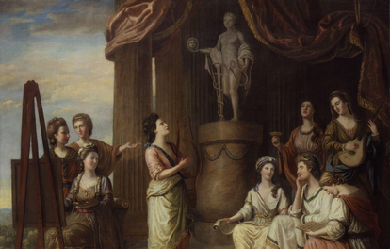
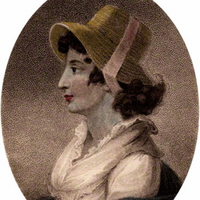
Anna Laetitia Barbauld (20 June 1743 – 9 March 1825) was a prominent English poetess, essayist, literary critic, editor and children’s author. A “woman of letters” who published in multiple genres, Barbauld had a successful writing career at a time when female professional writers were rare. She was a noted teacher at the Palgrave Academy and an innovative children’s writer; her primers provided a model for pedagogy for more than a century. Her essays demonstrated that it was possible for a woman to be publicly engaged in politics, and other women authors such as Elizabeth Benger emulated her. Barbauld’s literary career spanned numerous periods in British literary history: her work promoted the values of both the Enlightenment and Sensibility, and her poetry was foundational to the development of British Romanticism. Barbauld was also a literary critic, and her anthology of 18th-century British novels helped establish the canon as known today.
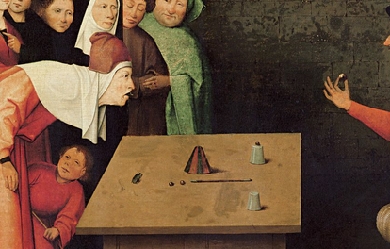
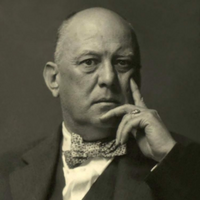
Aleister Crowley (/ˈkroʊli/; born Edward Alexander Crowley; 12 October 1875– 1 December 1947) was an English occultist, ceremonial magician, poet, painter, novelist, and mountaineer. He founded the religion and philosophy of Thelema, identifying himself as the prophet entrusted with guiding humanity into the Æon of Horus in the early 20th century. Born to a wealthy Plymouth Brethren family in Royal Leamington Spa, Warwickshire, Crowley rejected this fundamentalist Christian faith to pursue an interest in Western esotericism. He was educated at the University of Cambridge, where he focused his attentions on mountaineering and poetry, resulting in several publications. Some biographers allege that here he was recruited into a British intelligence agency, further suggesting that he remained a spy throughout his life. In 1898 he joined the esoteric Hermetic Order of the Golden Dawn, where he was trained in ceremonial magic by Samuel Liddell MacGregor Mathers and Allan Bennett. Moving to Boleskine House by Loch Ness in Scotland, he went mountaineering in Mexico with Oscar Eckenstein, before studying Hindu and Buddhist practices in India. He married Rose Edith Kelly and in 1904 they honeymooned in Cairo, Egypt, where Crowley claimed to have been contacted by a supernatural entity named Aiwass, who provided him with The Book of the Law, a sacred text that served as the basis for Thelema. Announcing the start of the Æon of Horus, The Book declared that its followers should adhere to the code of “Do what thou wilt” and seek to align themselves with their Will through the practice of magick. After an unsuccessful attempt to climb Kanchenjunga and a visit to India and China, Crowley returned to Britain, where he attracted attention as a prolific author of poetry, novels, and occult literature. In 1907, he and George Cecil Jones co-founded a Thelemite order, the A∴A∴, through which they propagated the religion. After spending time in Algeria, in 1912 he was initiated into another esoteric order, the German-based Ordo Templi Orientis (O.T.O.), rising to become the leader of its British branch, which he reformulated in accordance with his Thelemite beliefs. Through the O.T.O., Thelemite groups were established in Britain, Australia, and North America. Crowley spent the First World War in the United States, where he took up painting and campaigned for the German war effort against Britain, later revealing that he had infiltrated the pro-German movement to assist the British intelligence services. In 1920 he established the Abbey of Thelema, a religious commune in Cefalù, Sicily where he lived with various followers. His libertine lifestyle led to denunciations in the British press, and the Italian government evicted him in 1923. He divided the following two decades between France, Germany, and England, and continued to promote Thelema until his death. Crowley gained widespread notoriety during his lifetime, being a recreational drug experimenter, bisexual and an individualist social critic. He was denounced in the popular press as “the wickedest man in the world” and a Satanist. Crowley has remained a highly influential figure over Western esotericism and the counter-culture, and continues to be considered a prophet in Thelema. In 2002, a BBC poll ranked him as the seventy-third greatest Briton of all time. Early life Youth: 1875–94 Crowley was born as Edward Alexander Crowley at 30 Clarendon Square in Royal Leamington Spa, Warwickshire, on 12 October 1875. His father, Edward Crowley (1834–87), was trained as an engineer, but his share in a lucrative family brewing business, Crowley’s Alton Ales, had allowed him to retire before his son was born. His mother, Emily Bertha Bishop (1848–1917), came from a Devonshire-Somerset family and had a strained relationship with her son; she described him as “the Beast”, a name that he revelled in. The couple had been married at London’s Kensington Registry Office in November 1874, and were evangelical Christians. Crowley’s father had been born a Quaker, but had converted to the Exclusive Brethren, a faction of a Christian fundamentalist group known as the Plymouth Brethren, with Emily joining him upon marriage. Crowley’s father was particularly devout, spending his time as a travelling preacher for the sect and reading a chapter from the Bible to his wife and son after breakfast every day. Following the death of their baby daughter in 1880, in 1881 the Crowleys moved to Redhill, Surrey. At the age of 8, Crowley was sent to H.T. Habershon’s evangelical Christian boarding school in Hastings, and then to Ebor preparatory school in Cambridge, run by the Reverend Henry d’Arcy Champney, whom Crowley considered a sadist. In March 1887, when Crowley was 11, his father died of tongue cancer. Crowley described this as a turning point in his life, and he always maintained an admiration of his father, describing him as “his hero and his friend”. Inheriting a third of his father’s wealth, he began misbehaving at school and was harshly punished by Champney; Crowley’s family removed him from the school when he developed albuminuria. He then attended Malvern College and Tonbridge School, both of which he despised and left after a few terms. He became increasingly sceptical regarding Christianity, pointing out inconsistencies in the Bible to his religious teachers, and went against the Christian morality of his upbringing by smoking, masturbating, and having sex with prostitutes from whom he contracted gonorrhea. Sent to live with a Brethren tutor in Eastbourne, he undertook chemistry courses at Eastbourne College. Crowley developed interests in chess, poetry, and mountain climbing, and in 1894 climbed Beachy Head before visiting the Alps and joining the Scottish Mountaineering Club. The following year he returned to the Bernese Alps, climbing the Eiger, Trift, Jungfrau, Mönch, and Wetterhorn. Cambridge University: 1895–98 Having adopted the name of Aleister over Edward, in October 1895 Crowley began a three-year course at Trinity College, Cambridge, where he was entered for the Moral Science Tripos studying philosophy. With approval from his personal tutor, he changed to English literature, which was not then part of the curriculum offered. Crowley spent much of his time at university engaged in his pastimes, becoming president of the chess club and practising the game for two hours a day; he briefly considered a professional career as a chess player. Crowley also embraced his love of literature and poetry, particularly the works of Richard Francis Burton and Percy Bysshe Shelley. Many of his own poems appeared in student publications such as The Granta, Cambridge Magazine, and Cantab. He continued his mountaineering, going on holiday to the Alps to climb every year from 1894 to 1898, often with his friend Oscar Eckenstein, and in 1897 he made the first ascent of the Mönch without a guide. These feats led to his recognition in the Alpine mountaineering community. Crowley had his first significant mystical experience while on holiday in Stockholm in December 1896. Several biographers, including Lawrence Sutin, Richard Kaczynski, and Tobias Churton, believed that this was the result of Crowley’s first same-sex sexual experience, which enabled him to recognise his bisexuality. At Cambridge, Crowley maintained a vigorous sex life, largely with female prostitutes, from one of whom he caught syphilis, but eventually he took part in same-sex activities, despite their illegality. In October 1897, Crowley met Herbert Charles Pollitt (1871-1942), president of the Cambridge University Footlights Dramatic Club, and the two entered into a relationship. They broke apart because Pollitt did not share Crowley’s increasing interest in Western esotericism, a breakup that Crowley would regret for many years. Pollitt, collector and connoisseur, assumed the Christian name Jerome. He began to correspond with Oscar Wilde in 1898; Aubrey Beardsley designed him a bookplate for his use. In 1897, Crowley travelled to St Petersburg in Russia, later claiming that he was trying to learn Russian as he was considering a future diplomatic career there. Biographers Richard Spence and Tobias Churton suggested that Crowley had done so as an intelligence agent under the employ of the British secret service, speculating that he had been enlisted while at Cambridge. In October 1897, a brief illness triggered considerations of mortality and “the futility of all human endeavour”, and Crowley abandoned all thoughts of a diplomatic career in favour of pursuing an interest in the occult. In March 1898, he obtained A.E. Waite’s The Book of Black Magic and of Pacts (1898), and then Karl von Eckartshausen’s The Cloud Upon the Sanctuary (1896), furthering his occult interests. In 1898 Crowley privately published 100 copies of his poem Aceldama: A Place to Bury Strangers In, but it was not a particular success. That same year he published a string of other poems, including White Stains, a Decadent collection of erotic poetry that was printed abroad lest its publication be prohibited by the British authorities. In July 1898, he left Cambridge, not having taken any degree at all despite a “first class” showing in his 1897 exams and consistent “second class honours” results before that. The Golden Dawn: 1898–99 In August 1898, Crowley was in Zermatt, Switzerland, where he met the chemist Julian L. Baker, and the two began discussing their common interest in alchemy. Back in London, Baker introduced Crowley to George Cecil Jones, Baker’s brother in-law, and a fellow member of the occult society known as the Hermetic Order of the Golden Dawn, which had been founded in 1888. Crowley was initiated into the Outer Order of the Golden Dawn on 18 November 1898 by the group’s leader, Samuel Liddell MacGregor Mathers. The ceremony took place in the Golden Dawn’s Isis-Urania Temple held at London’s Mark Masons Hall, where Crowley took the magical motto and name “Frater Perdurabo”, which he interpreted as “I shall endure to the end”. Biographers Richard Spence and Tobias Churton have suggested that Crowley joined the Order under the command of the British secret services to monitor the activities of Mathers, who was known to be a Carlist. Crowley moved into his own luxury flat at 67–69 Chancery Lane and soon invited a senior Golden Dawn member, Allan Bennett, to live with him as his personal magical tutor. Bennett taught Crowley more about ceremonial magic and the ritual use of drugs, and together they performed the rituals of the Goetia, until Bennett left for South Asia to study Buddhism. In November 1899, Crowley purchased Boleskine House in Foyers on the shore of Loch Ness in Scotland. He developed a love of Scottish culture, describing himself as the “Laird of Boleskine”, and took to wearing traditional highland dress, even during visits to London. He continued writing poetry, publishing Jezebel and Other Tragic Poems, Tales of Archais, Songs of the Spirit, Appeal to the American Republic, and Jephthah in 1898–99; most gained mixed reviews from literary critics, although Jephthah was considered a particular critical success. Crowley soon progressed through the lower grades of the Golden Dawn, and was ready to enter the group’s inner Second Order. He was unpopular in the group; his bisexuality and libertine lifestyle had gained him a bad reputation, and he had developed feuds with some of the members, including W.B. Yeats. When the Golden Dawn’s London lodge refused to initiate Crowley into the Second Order, he visited Mathers in Paris, who personally admitted him into the Adeptus Minor Grade. A schism had developed between Mathers and the London members of the Golden Dawn, who were unhappy with his autocratic rule. Acting under Mathers’ orders, Crowley– with the help of his mistress and fellow initiate Elaine Simpson– attempted to seize the Vault of the Adepts, a temple space at 36 Blythe Road in West Kensington, from the London lodge members. When the case was taken to court, the judge ruled in favour of the London lodge, as they had paid for the space’s rent, leaving both Crowley and Mathers isolated from the group. Spence suggested that the entire scenario was part of an intelligence operation to undermine Mathers’ authority. Mexico, India, Paris, and marriage: 1900–03 In 1900, Crowley travelled to Mexico via the United States, settling in Mexico City and taking a local woman as his mistress. Developing a love of the country, he continued experimenting with ceremonial magic, working with John Dee’s Enochian invocations. He later claimed to have been initiated into Freemasonry while there, and he wrote a play based on Richard Wagner’s Tannhäuser as well as a series of poems, published as Oracles (1905). Eckenstein joined him later that year, and together they climbed several mountains, including Iztaccihuatl, Popocatepetl, and Colima, the latter of which they had to abandon owing to a volcanic eruption. Spence has suggested that the purpose of the trip might have been to explore Mexican oil prospects for British intelligence. Leaving Mexico, Crowley headed to San Francisco before sailing for Hawaii aboard the Nippon Maru. On the ship he had a brief affair with a married woman named Mary Alice Rogers; saying he had fallen in love with her, he wrote a series of poems about the romance, published as Alice: An Adultery (1903). Briefly stopping at Japan and Hong Kong, Crowley reached Ceylon, where he met with Allan Bennett, who was there studying Shaivism. The pair spent some time in Kandy before Bennett decided to become a Buddhist monk in the Theravada tradition, travelling to Burma to do so. Crowley decided to tour India, devoting himself to the Hindu practice of raja yoga, from which he claimed to have achieved the spiritual state of dhyana. He spent much of this time studying at the Meenakshi Amman Temple in Madura, and also wrote poetry which was published as The Sword of Song (1904). He contracted malaria, and had to recuperate from the disease in Calcutta and Rangoon. In 1902, he was joined in India by Eckenstein and several other mountaineers: Guy Knowles, H. Pfannl, V. Wesseley, and Jules Jacot-Guillarmod. Together the Eckenstein-Crowley expedition attempted K2, which had never been climbed. On the journey, Crowley was afflicted with influenza, malaria, and snow blindness, and other expedition members were also struck with illness. They reached an altitude of 20,000 feet (6,100 m) before turning back. Arriving in Paris in November 1902, he hung out with his friend and future brother-in-law, the painter Gerald Kelly, and through him became a fixture of the Parisian arts scene, authoring a series of poems on the work of an acquaintance, the sculptor Auguste Rodin, published as Rodin in Rime (1907). One of those frequenting this milieu was W. Somerset Maugham, who after briefly meeting Crowley later used him as a model for the character of Oliver Haddo in his novel The Magician (1908). Returning to Boleskine in April 1903, in August Crowley wed Gerald’s sister Rose Edith Kelly in a “marriage of convenience” to prevent her entering an arranged marriage; the marriage appalled the Kelly family and damaged his friendship with Gerald. Heading on a honeymoon to Paris, Cairo, and then Ceylon, Crowley fell in love with Rose and worked to prove his affections. While on his honeymoon, he wrote her a series of love poems, published as Rosa Mundi and other Love Songs (1906), as well as authoring the religious satire Why Jesus Wept (1904). Developing Thelema Egypt and The Book of the Law: 1904 In February 1904, Crowley and Rose arrived in Cairo. Claiming to be a prince and princess, they rented an apartment in which Crowley set up a temple room and began invoking ancient Egyptian deities, while studying Islamic mysticism and Arabic. According to Crowley’s later account, Rose regularly became delirious and informed him “they are waiting for you”. On 18 March, she explained that “they” were the god Horus, and on 20 March proclaimed that “the Equinox of the Gods has come”. She led him to a nearby museum, where she showed him a seventh-century BCE mortuary stele known as the Stele of Ankh-ef-en-Khonsu; Crowley thought it important that the exhibit’s number was 666, the number of the beast in Christian belief, and in later years termed the artefact the “Stele of Revealing.” According to Crowley’s later statements, on 8 April he heard a disembodied voice that claimed to be that of Aiwass, the messenger of Horus, or Hoor-Paar-Kraat. Crowley said that he wrote down everything the voice told him over the course of the next three days, and titled it Liber L vel Legis or The Book of the Law. The book proclaimed that humanity was entering a new Aeon, and that Crowley would serve as its prophet. It stated that a supreme moral law was to be introduced in this Aeon, “Do what thou wilt shall be the whole of the Law,” and that people should learn to live in tune with their Will. This book, and the philosophy that it espoused, became the cornerstone of Crowley’s religion, Thelema. Crowley said that at the time he had been unsure what to do with The Book of the Law. Often resenting it, he said that he ignored the instructions which the text commanded him to perform, which included taking the Stele of Revealing from the museum, fortifying his own island, and translating the book into all the world’s languages. According to his account, he instead sent typescripts of the work to several occultists he knew, putting the manuscript away and ignoring it. Kangchenjunga and China: 1905–06 Returning to Boleskine, Crowley came to believe that Mathers had begun using magic against him, and the relationship between the two broke down. On 28 July 1905, Rose gave birth to Crowley’s first child, a daughter named Lilith, with Crowley authoring the pornographic Snowdrops From a Curate’s Garden to entertain his recuperating wife. He also founded a publishing company through which to publish his poetry, naming it the Society for the Propagation of Religious Truth in parody of the Society for Promoting Christian Knowledge. Among its first publications were Crowley’s Collected Works, edited by Ivor Back. His poetry often received strong reviews (either positive or negative), but never sold well. In an attempt to gain more publicity, he issued a reward of £100 for the best essay on his work. The winner of this was J. F. C. Fuller, a British Army officer and military historian, whose essay, The Star in the West (1907), heralded Crowley’s poetry as some of the greatest ever written. Crowley decided to climb Kangchenjunga in the Himalayas of Nepal, widely recognised as the world’s most treacherous mountain. Assembling a team consisting of Jacot-Guillarmod, Charles Adolphe Reymond, Alexis Pache, and Alcesti C. Rigo de Righi, the expedition was marred by much argument between Crowley and the others, who thought that he was reckless. They eventually mutinied against Crowley’s control, with the other climbers heading back down the mountain as nightfall approached despite Crowley’s warnings that it was too dangerous. Subsequently, Pache and several porters were killed in an accident, something for which Crowley was widely blamed by the mountaineering community. Spending time in Moharbhanj, where he took part in big game hunting and wrote the homoerotic work The Scented Garden, Crowley met up with Rose and Lilith in Calcutta before being forced to leave India after shooting dead a native man who tried to mug him. Briefly visiting Bennett in Burma, Crowley and his family decided to tour Southern China, hiring porters and a nanny for the purpose. Spence has suggested that this trip to China was orchestrated as part of a British intelligence scheme to monitor the region’s opium trade. Crowley smoked opium throughout the journey, which took the family from Tengyueh through to Yungchang, Tali, Yunnanfu, and then Hanoi. On the way he spent much time on spiritual and magical work, reciting the “Bornless Ritual”, an invocation to his Holy Guardian Angel, on a daily basis. While Rose and Lilith returned to Europe, Crowley headed to Shanghai to meet old friend Elaine Simpson, who was fascinated by The Book of the Law; together they performed rituals in an attempt to contact Aiwass. Crowley then sailed to Japan and Canada, before continuing to New York City, where he unsuccessfully solicited support for a second expedition up Kangchenjunga. Upon arrival in Britain, Crowley learned that his daughter Lilith had died of typhoid in Rangoon, something he later blamed on Rose’s increasing alcoholism. Under emotional distress, his health began to suffer, and he underwent a series of surgical operations. He began short-lived romances with actress Vera “Lola” Neville (née Snepp) and author Ada Leverson, while Rose gave birth to Crowley’s second daughter, Lola Zaza, in February 1907. The A∴A∴ and the Holy Books of Thelema: 1907–09 With his old mentor George Cecil Jones, Crowley continued performing the Abramelin rituals at the Ashdown Park Hotel in Coulsdon, Surrey. Crowley claimed that in doing so he attained samadhi, or union with Godhead, thereby marking a turning point in his life. Making heavy use of hashish during these rituals, he wrote an essay on “The Psychology of Hashish” (1909) in which he championed the drug as an aid to mysticism. He also claimed to have been contacted once again by Aiwass in late October and November 1907, adding that Aiwass dictated two further texts to him, “Liber VII” and “Liber Cordis Cincti Serpente”, both of which were later classified in the corpus of Holy Books of Thelema. Crowley wrote down more Thelemic Holy Books during the last two months of the year, including “Liber LXVI”, “Liber Arcanorum”, “Liber Porta Lucis, Sub Figura X”, “Liber Tau”, “Liber Trigrammaton” and “Liber DCCCXIII vel Ararita”, which he again claimed to have received from a preternatural source. Crowley stated that in June 1909, when the manuscript of The Book of the Law was rediscovered at Boleskine, he developed the opinion that Thelema represented objective truth. Crowley’s inheritance was running out. Trying to earn money, he was hired by George Montagu Bennett, the Earl of Tankerville, to help protect him from witchcraft; recognising Bennett’s paranoia as being based in his cocaine addiction, Crowley took him on holiday to France and Morocco to recuperate. In 1907, he also began taking in paying students, whom he instructed in occult and magical practice. Victor Neuburg, whom Crowley met in February 1907, became his sexual partner and closest disciple; in 1908 the pair toured northern Spain before heading to Tangier, Morocco. The following year Neuburg stayed at Boleskine, where he and Crowley engaged in sadomasochism. Crowley continued to write prolifically, producing such works of poetry as Ambergris, Clouds Without Water, and Konx Om Pax, as well as his first attempt at an autobiography, The World’s Tragedy. Recognising the popularity of short horror stories, Crowley wrote his own, some of which were published, and he also published several articles in Vanity Fair, a magazine edited by his friend Frank Harris. He also wrote Liber 777, a book of magical and Qabalistic correspondences that borrowed from Mathers and Bennett. In November 1907, Crowley and Jones decided to found an occult order to act as a successor to the Hermetic Order of the Golden Dawn, being aided in doing so by Fuller. The result was the A∴A∴. The group’s headquarters and temple were situated at 124 Victoria Street in central London, and their rites borrowed much from those of the Golden Dawn, but with an added Thelemic basis. Its earliest members included solicitor Richard Noel Warren, artist Austin Osman Spare, Horace Sheridan-Bickers, author George Raffalovich, Francis Henry Everard Joseph Feilding, engineer Herbert Edward Inman, Kenneth Ward, and Charles Stansfeld Jones. In March 1909, Crowley began production of a biannual periodical titled The Equinox. He billed this periodical, which was to become the “Official Organ” of the A∴A∴, as “The Review of Scientific Illuminism”. Crowley had become increasingly frustrated with Rose’s alcoholism, and in November 1909 he divorced her on the grounds of his own adultery. Lola was entrusted to Rose’s care; the couple remained friends and Rose continued to live at Boleskine. Her alcoholism worsened, and as a result she was institutionalised in September 1911. Algeria and the Rites of Eleusis: 1909–11 In November 1909, Crowley and Neuburg travelled to Algeria, touring the desert from El Arba to Aumale, Bou Saâda, and then Dā'leh Addin, with Crowley reciting the Quran on a daily basis. During the trip he invoked the thirty aethyrs of Enochian magic, with Neuburg recording the results, later published in The Equinox as The Vision and the Voice. Following a mountaintop sex magic ritual, Crowley also performed an invocation to the demon Choronzon involving blood sacrifice, considering the results to be a watershed in his magical career. Returning to London in January 1910, Crowley found that Mathers was suing him for publishing Golden Dawn secrets in The Equinox; the court found in favour of Crowley. The case was widely reported on in the press, with Crowley gaining wider fame. Crowley enjoyed this, and played up to the sensationalist stereotype of being a Satanist and advocate of human sacrifice, despite being neither. The publicity attracted new members to the A∴A∴, among them Frank Bennett, James Bayley, Herbert Close, and James Windram. The Australian violinist Leila Waddell soon became Crowley’s lover. Deciding to expand his teachings to a wider audience, Crowley developed the Rites of Artemis, a public performance of magic and symbolism featuring A∴A∴ members personifying various deities. It was first performed at the A∴A∴ headquarters, with attendees given a fruit punch containing peyote to enhance their experience. Various members of the press attended, and reported largely positively on it. In October and November 1910, Crowley decided to stage something similar, the Rites of Eleusis, at Caxton Hall, Westminster; this time press reviews were mixed. Crowley came under particular criticism from West de Wend Fenton, editor of The Looking Glass newspaper, who called him “one of the most blasphemous and cold-blooded villains of modern times”.i Fenton’s articles suggested that Crowley and Jones were involved in homosexual activity; Crowley did not mind, but Jones unsuccessfully sued for libel. Fuller broke off his friendship and involvement with Crowley over the scandal, and Crowley and Neuburg returned to Algeria for further magical workings. The Equinox continued publishing, and various books of literature and poetry were also published under its imprint, like Crowley’s Ambergris, The Winged Beetle, and The Scented Garden, as well as Neuburg’s The Triumph of Pan and Ethel Archer’s The Whirlpool. In 1911, Crowley and Waddell holidayed in Montigny-sur-Loing, where he wrote prolifically, producing poems, short stories, plays, and 19 works on magic and mysticism, including the two final Holy Books of Thelema. In Paris, he met Mary Desti, who became his next “Scarlet Woman”, with the two undertaking magical workings in St. Moritz; Crowley believed that one of the Secret Chiefs, Ab-ul-Diz, was speaking through her. Based on Desti’s statements when in trance, Crowley wrote the two-volume Book 4 (1912–13) and at the time developed the spelling “magick” in reference to the paranormal phenomenon as a means of distinguishing it from the stage magic of illusionists. Ordo Templi Orientis and the Paris Working: 1912–14 In early 1912, Crowley published The Book of Lies, a work of mysticism that biographer Lawrence Sutin described as “his greatest success in merging his talents as poet, scholar, and magus”. The German occultist Theodor Reuss later accused him of publishing some of the secrets of his own occult order, the Ordo Templi Orientis (O.T.O.), within The Book. Crowley convinced Reuss that the similarities were coincidental, and the two became friends. Reuss appointed Crowley as head of the O.T.O’s British branch, the Mysteria Mystica Maxima (MMM), and at a ceremony in Berlin Crowley adopted the magical name of Baphomet and was proclaimed "X° Supreme Rex and Sovereign Grand Master General of Ireland, Iona, and all the Britons". With Reuss’ permission, Crowley set about advertising the MMM and re-writing many O.T.O. rituals, which were then based largely on Freemasonry; his incorporation of Thelemite elements proved controversial in the group. Fascinated by the O.T.O’s emphasis on sex magic, Crowley devised a magical working based on anal sex and incorporated it into the syllabus for those O.T.O. members who had been initiated into the eleventh degree. In March 1913 Crowley acted as producer for The Ragged Ragtime Girls, a group of female violinists led by Waddell, as they performed at London’s Old Tivoli theatre. They subsequently performed in Moscow for six weeks, where Crowley had a sadomasochistic relationship with the Hungarian Anny Ringler. In Moscow, Crowley continued to write plays and poetry, including “Hymn to Pan”, and the Gnostic Mass, a Thelemic ritual that became a key part of O.T.O. liturgy. Churton suggested that Crowley had travelled to Moscow on the orders of British intelligence to spy on revolutionary elements in the city. In January 1914 Crowley and Neuburg settled in to an apartment in Paris, where the former was involved in the controversy surrounding Jacob Epstein’s new monument to Oscar Wilde. Together Crowley and Neuburg performed the six-week “Paris Working”, a period of intense ritual involving strong drug use in which they invoked the gods Mercury and Jupiter. As part of the ritual, the couple performed acts of sex magic together, at times being joined by journalist Walter Duranty. Inspired by the results of the Working, Crowley authored Liber Agapé, a treatise on sex magic. Following the Paris Working, Neuburg began to distance himself from Crowley, resulting in an argument in which Crowley cursed him. United States: 1914–19 By 1914 Crowley was living a hand-to-mouth existence, relying largely on donations from A∴A∴ members and dues payments made to O.T.O. In May he transferred ownership of Boleskine House to the MMM for financial reasons, and in July he went mountaineering in the Swiss Alps. During this time the First World War broke out. After recuperating from a bout of phlebitis, Crowley set sail for the United States aboard the RMS Lusitania in October 1914. Arriving in New York City, he moved into a hotel and began earning money writing for the American edition of Vanity Fair and undertaking freelance work for the famed astrologer Evangeline Adams. In the city, he continued experimenting with sex magic, through the use of masturbation, female prostitutes, and male clients of a Turkish bathhouse; all of these encounters were documented in his diaries. Professing to be of Irish ancestry and a supporter of Irish independence from Great Britain, Crowley began to espouse support for Germany in their war against Britain. He became involved in New York’s pro-German movement, and in January 1915 German spy George Sylvester Viereck employed him as a writer for his propagandist paper, The Fatherland, which was dedicated to keeping the US neutral in the conflict. In later years, detractors denounced Crowley as a traitor to Britain for this action. In reality, Crowley was a double agent, working for the British intelligence services to infiltrate and undermine Germany’s operation in New York. Many of his articles in The Fatherland were hyperbolic, for instance comparing Kaiser Wilhelm II to Jesus Christ; in July 1915 he orchestrated a publicity stunt– reported on by The New York Times– in which he declared independence for Ireland in front of the Statue of Liberty; the real intention was to make the German lobby appear ridiculous in the eyes of the American public. It has been argued that he encouraged the German Navy to destroy the Lusitania, informing them that it would ensure the US stayed out of the war, while in reality hoping that it would bring the US into the war on Britain’s side. Crowley entered into a relationship with Jeanne Robert Foster, with whom he toured the West Coast. In Vancouver, headquarters of the North American O.T.O., he met with Charles Stansfeld Jones and Wilfred Talbot Smith to discuss the propagation of Thelema on the continent. In Detroit he experimented with anhalonium at Parke-Davis, then visited Seattle, San Francisco, Santa Cruz, Los Angeles, San Diego, Tijuana, and the Grand Canyon, before returning to New York. There he befriended Ananda Coomaraswamy and his wife Alice Richardson; Crowley and Richardson performed sex magic in April 1916, following which she became pregnant and then miscarried. Later that year he took a “magical retirement” to a cabin by Lake Pasquaney owned by Evangeline Adams. There, he made heavy use of drugs and undertook a ritual after which he proclaimed himself “Master Therion”. He also wrote several short stories based on J.G. Frazer’s The Golden Bough and a work of literary criticism, The Gospel According to Bernard Shaw. In December he moved to New Orleans, his favourite US city, before spending February 1917 with evangelical Christian relatives in Titusville, Florida. Returning to New York, he moved in with artist and A∴A∴ member Leon Engers Kennedy, in May learning of his mother’s death. After the collapse of The Fatherland, Crowley continued his association with Viereck, who appointed him contributing editor of arts journal The International. Crowley used it to promote Thelema, but it soon ceased publication. He then moved to the studio apartment of Roddie Minor, who became his partner and Scarlet Woman. Through their rituals, Crowley believed that they were contacted by a preternatural entity named Alamantrah. The relationship soon ended. In 1918, Crowley went on a magical retreat in the wilderness of Esopus Island on the Hudson River. Here, he began a translation of the Tao Te Ching, painted Thelemic slogans on the riverside cliffs, and– he later claimed– experienced past life memories of being Ge Xuan, Pope Alexander VI, Alessandro Cagliostro, and Eliphas Levi. Back in New York, he moved to Greenwich Village, where he took Leah Hirsig as his lover and next Scarlet Woman. He took up painting as a hobby, exhibiting his work at the Greenwich Village Liberal Club and attracting the attention of the New York Evening World. With the financial assistance of sympathetic Freemasons, Crowley revived The Equinox with the first issue of volume III, known as “The Blue Equinox”. He spent mid-1919 on a climbing holiday in Montauk before returning to London in December. Abbey of Thelema: 1920–23 Now destitute and back in London, Crowley came under attack from the tabloid John Bull, which labelled him traitorous “scum” for his work with the German war effort; several friends aware of his intelligence work urged him to sue, but he decided not to. When he was suffering from asthma, a doctor prescribed him heroin, to which he soon became addicted. In January 1920, he moved to Paris, renting a house in Fontainebleau with Leah Hirsig; they were soon joined in a ménage à trois by Ninette Shumway, and also by Leah’s newborn daughter Anne “Poupée” Leah. Crowley had ideas of forming a community of Thelemites, which he called the Abbey of Thelema after the Abbaye de Thélème in François Rabelais’ satire Gargantua and Pantagruel. After consulting the I Ching, he chose Cefalù (on Sicily, Italy) as a location, and after arriving there, began renting the old Villa Santa Barbara as his Abbey on 2 April. Moving to the commune with Hirsig, Shumway, and their children Hansi, Howard, and Poupée, Crowley described the scenario as “perfectly happy... my idea of heaven.” They wore robes, and performed rituals to the sun god Ra at set times during the day, also occasionally performing the Gnostic Mass; the rest of the day they were left to follow their own interests. Undertaking widespread correspondences, Crowley continued to paint, wrote a commentary on The Book of the Law, and revised the third part of Book 4. He offered a libertine education for the children, allowing them to play all day and witness acts of sex magic. He occasionally travelled to Palermo to visit rent boys and buy supplies, including drugs; his heroin addiction came to dominate his life, and cocaine began to erode his nasal cavity. There was no cleaning rota, and wild dogs and cats wandered throughout the building, which soon became unsanitary. Poupée died in October 1920, and Ninette gave birth to a daughter, Astarte Lulu Panthea, soon afterwards. New followers continued to arrive at the Abbey to be taught by Crowley. Among them was film star Jane Wolfe, who arrived in July 1920, where she was initiated into the A∴A∴ and became Crowley’s secretary. Another was Cecil Frederick Russell, who often argued with Crowley, disliking the same-sex sexual magic that he was required to perform, and left after a year. More conducive was the Australian Thelemite Frank Bennett, who also spent several months at the Abbey. In February 1922, Crowley returned to Paris for a retreat in an unsuccessful attempt to kick his heroin addiction. He then went to London in search of money, where he published articles in The English Review criticising the Dangerous Drugs Act 1920 and wrote a novel, Diary of a Drug Fiend, completed in July. On publication, it received mixed reviews; he was lambasted by the Sunday Express, which called for its burning and used its influence to prevent further reprints. Subsequently, a young Thelemite named Raoul Loveday moved to the Abbey with his wife Betty May; while Loveday was devoted to Crowley, May detested him and life at the commune. She later said that Loveday was made to drink the blood of a sacrificed cat, and that they were required to cut themselves with razors every time they used the pronoun “I”. Loveday drank from a local polluted stream, soon developing a liver infection resulting in his death in February 1923. Returning to London, May told her story to the press. John Bull proclaimed Crowley “the wickedest man in the world” and “a man we’d like to hang”, and although Crowley deemed many of their accusations against him to be slanderous, he was unable to afford the legal fees to sue them. As a result, John Bull continued its attack, with its stories being repeated in newspapers throughout Europe and in North America. The Fascist government of Benito Mussolini learned of Crowley’s activities and in April 1923 he was given a deportation notice forcing him to leave Italy; without him, the Abbey closed. Later life Tunisia, Paris, and London: 1923–29 Crowley and Hirsig went to Tunis, where, dogged by continuing poor health, he unsuccessfully tried again to give up heroin, and began writing what he termed his “autohagiography”, The Confessions of Aleister Crowley. They were joined in Tunis by the Thelemite Norman Mudd, who became Crowley’s public relations consultant. Employing a local boy, Mohammad ben Brahim, as his servant, Crowley went with him on a retreat to Nefta, where they performed sex magic together. In January 1924, Crowley travelled to Nice, France, where he met with Frank Harris, underwent a series of nasal operations, and visited the Institute for the Harmonious Development of Man, and had a positive opinion of its founder, George Gurdjieff. Destitute, he took on a wealthy student, Alexander Zu Zolar, before taking on another American follower, Dorothy Olsen. Crowley took Olsen back to Tunisia for a magical retreat in Nefta, where he also wrote To Man (1924), a declaration of his own status as a prophet entrusted with bringing Thelema to humanity. After spending the winter in Paris, in early 1925 Crowley and Olsen returned to Tunis, where he wrote The Heart of the Master (1938) as an account of a vision he experienced in a trance. In March Olsen became pregnant, and Hirsig was called to take care of her; she miscarried, following which Crowley took Olsen back to France. Hirsig later distanced herself from Crowley, who then denounced her. According to Crowley, Reuss had named him head of the O.T.O. upon his death, but this was challenged by a leader of the German O.T.O., Heinrich Tränker. Tränker called the Hohenleuben Conference in Thuringia, Germany, which Crowley attended. There, prominent members like Karl Germer and Martha Küntzel championed Crowley’s leadership, but other key figures like Albin Grau, Oskar Hopfer, and Henri Birven backed Tränker by opposing it, resulting in a split in the O.T.O. Moving to Paris, where he broke with Olsen in 1926, Crowley went through a large number of lovers over the following years, with whom he experimented in sex magic. Throughout, he was dogged by poor health, largely caused by his heroin and cocaine addictions. In 1928, Crowley was introduced to young Englishman Israel Regardie, who embraced Thelema and became Crowley’s secretary for the next three years. That year, Crowley also met Gerald Yorke, who began organising Crowley’s finances but never became a Thelemite. He also befriended Thomas Driberg; Driberg did not accept Thelema either. It was here that Crowley also published one of his most significant works, Magick in Theory and Practice, which received little attention at the time. In December 1929 Crowley met the Nicaraguan Maria Teresa Sanchez. Crowley was deported from France by the authorities, who disliked his reputation and feared that he was a German agent. So that she could join him in Britain, Crowley married Sanchez in August 1929. Now based in London, Mandrake Press agreed to publish his autobiography in a limited edition six-volume set, also publishing his novel Moonchild and book of short stories The Stratagem. Mandrake went into liquidation in November 1930, before the entirety of Crowley’s Confessions could be published. Mandrake’s owner P.R. Stephenson meanwhile wrote The Legend of Aleister Crowley, an analysis of the media coverage surrounding him. Berlin and London: 1930–38 In April 1930, Crowley moved to Berlin, where he took Hanni Jaegar as his magical partner; the relationship was troubled. In September he went to Lisbon in Portugal to meet the poet Fernando Pessoa. There, he decided to fake his own death, doing so with Pessoa’s help at the Boca do Inferno rock formation. He then returned to Berlin, where he reappeared three weeks later at the opening of his art exhibition at the Gallery Neumann-Nierendorf. Crowley’s paintings fitted with the fashion for German Expressionism; few of them sold, but the press reports were largely favourable. In August 1931, he took Bertha Busch as his new lover; they had a violent relationship, and often physically assaulted one another. He continued to have affairs with both men and women while in the city, and met with famous people like Aldous Huxley and Alfred Adler. After befriending him, in January 1932 he took the communist Gerald Hamilton as a lodger, through whom he was introduced to many figures within the Berlin far left; it is possible that he was operating as a spy for British intelligence at this time, monitoring the communist movement. Crowley left Busch and returned to London, where he took Pearl Brooksmith as his new Scarlet Woman. Undergoing further nasal surgery, it was here in 1932 that he was invited to be guest of honour at Foyles’ Literary Luncheon, also being invited by Harry Price to speak at the National Laboratory of Psychical Research. In need of money, he launched a series of court cases against people whom he believed had libelled him, some of which proved successful. He gained much publicity for his lawsuit against Constable and Co for publishing Nina Hamnett’s Laughing Torso (1932)– a book he thought libelled him– but lost the case. The court case added to Crowley’s financial problems, and in February 1935 he was declared bankrupt. During the hearing, it was revealed that Crowley had been spending three times his income for several years. Crowley developed a platonic friendship with Deidre Patricia O’Doherty; she offered to bear his child, who was born in May 1937. Named Randall Gair, Crowley nicknamed him Aleister Atatürk. Crowley continued to socialise with friends, holding curry parties in which he cooked particularly spicy food for them. In 1936, he published his first book in six years, The Equinox of the Gods, which contained a facsimile of The Book of the Law and was considered to be volume III, number 3, of The Equinox periodical. The work sold well, resulting in a second print run. In 1937 he gave a series of public lectures on yoga in Soho. Crowley was now living largely off contributions supplied by the O.T.O.'s Agape Lodge in California, led by rocket scientist John Whiteside “Jack” Parsons. Crowley was intrigued by the rise of Nazism in Germany, and influenced by his friend Martha Küntzel believed that Adolf Hitler might convert to Thelema; when the Nazis abolished the German O.T.O. and imprisoned Germer, who fled to the US, Crowley then lambasted Hitler as a black magician. Second World War and death: 1939–47 When the Second World War broke out, Crowley wrote to the Naval Intelligence Division offering his services, but they declined. He associated with a variety of figures in Britain’s intelligence community at the time, including Dennis Wheatley, Roald Dahl, Ian Fleming, and Maxwell Knight, and claimed to have been behind the “V for Victory” sign first used by the BBC; this has never been proven. In 1940, his asthma worsened, and with his German-produced medication unavailable, he returned to using heroin, once again becoming addicted. As the Blitz hit London, Crowley relocated to Torquay, where he was briefly hospitalised with asthma, and entertained himself with visits to the local chess club. Tiring of Torquay, he returned to London, where he was visited by American Thelemite Grady McMurtry, to whom Crowley awarded the title of “Hymenaeus Alpha”. He stipulated that though Germer would be his immediate successor, McMurty should succeed Germer as head of the O.T.O. after the latter’s death. With O.T.O. initiate Lady Frieda Harris, Crowley developed plans to produce a tarot card set, designed by him and painted by Harris. Accompanying this was a book, published in a limited edition as The Book of Thoth by Chiswick Press in 1944. To aid the war effort, he wrote a proclamation on the rights of humanity, Liber Oz, and a poem for the liberation of France, Le Gauloise. Crowley’s final publication during his lifetime was a book of poetry, Olla: An Anthology of Sixty Years of Song. Another of his projects, Aleister Explains Everything, was posthumously published as Magick Without Tears. In April 1944 Crowley briefly moved to Aston Clinton in Buckinghamshire, where he was visited by the poet Nancy Cunard, before relocating to Hastings in Sussex, where he took up residence at the Netherwood boarding house. He took a young man named Kenneth Grant as his secretary, paying him in magical teaching rather than wages. He was also introduced to John Symonds, whom he appointed to be his literary executor; Symonds thought little of Crowley, later publishing negative biographies of him. Corresponding with the illusionist Arnold Crowther, it was through him that Crowley was introduced to Gerald Gardner, the future founder of Gardnerian Wicca. They became friends, with Crowley authorising Gardner to revive Britain’s ailing O.T.O. Another visitor was Eliza Marian Butler, who interviewed Crowley for her book The Myth of the Magus. Other friends and family also spent time with him, among them Doherty and Crowley’s son Aleister Atatürk. On 1 December 1947, Crowley died at Netherwood of chronic bronchitis aggravated by pleurisy and myocardial degeneration, aged 72. His funeral was held at a Brighton crematorium on 5 December; about a dozen people attended, and Louis Wilkinson read excerpts from the Gnostic Mass, The Book of the Law, and “Hymn to Pan”. The funeral generated press controversy, and was labelled a Black Mass by the tabloids. Crowley’s ashes were sent to Germer in the US, who buried them in his garden in Hampton, New Jersey. Beliefs and thought Crowley’s thought was not always cohesive, and was influenced by a variety of sources, ranging from eastern religious movements and practices like Hindu yoga and Buddhism, scientific naturalism, and various currents within Western esotericism, among them ceremonial magic, alchemy, astrology, Rosicrucianism, Kabbalah, and the Tarot. Philosopher John Moore opined that Crowley’s thought was rooted in Romanticism and the Decadent movement, an assessment shared by historian Alex Owen, who noted that Crowley adhered to the “modus operandi” of the decadent movement throughout his life. Crowley believed that the twentieth century marked humanity’s entry to the Aeon of Horus, a new era in which humans would take increasing control of their destiny. He believed that this Aeon follows on from the Aeon of Osiris, in which paternalistic religions like Christianity, Islam, and Buddhism dominated the world, and that this in turn had followed the Aeon of Isis, which had been maternalistic and dominated by goddess worship. Thelema revolves around the idea that human beings each have their own True Will that they should discover and pursue, and that this exists in harmony with the Cosmic Will that pervades the universe. The moral code of “Do What Thou Wilt” is believed by Thelemites to be the faith’s ethical law, although academic Marco Pasi noted that this was not anarchistic or libertarian in structure, as Crowley saw individuals as part of a wider societal organism. Crowley believed in the objective existence of magic, which he chose to spell “Magick”. In his book Magick in Theory and Practice, Crowley defined Magick as “the Science and Art of causing change to occur in conformity with Will”. He also told his disciple Karl Germer that “Magick is getting into communication with individuals who exist on a higher plane than ours. Mysticism is the raising of oneself to their level.” Crowley saw Magick as a third way between religion and science, giving The Equinox the subtitle of “The Method of Science; the Aim of Religion”. Both during his life and after it, Crowley has been widely described as a Satanist, usually by detractors. Crowley stated he did not consider himself a Satanist, nor did he worship Satan, as he did not accept the Christian world view in which Satan was believed to exist. He was also accused of advocating human sacrifice, largely because of a passage in Book 4 in which he stated that “A male child of perfect innocence and high intelligence is the most satisfactory victim”. This was intended as a veiled reference to male masturbation. Personal life Crowley biographer Martin Booth asserted that Crowley was “self-confident, brash, eccentric, egotistic, highly intelligent, arrogant, witty, wealthy, and, when it suited him, cruel”. Similarly, Richard Spence noted that Crowley was “capable of immense physical and emotional cruelty”. Biographer Lawrence Sutin noted that Crowley exhibited “courage, skill, dauntless energy, and remarkable focus of will” while at the same time showing a "blind arrogance, petty fits of bile, [and] contempt for the abilities of his fellow men". The Thelemite Lon Milo DuQuette noted that Crowley “was by no means perfect” and “often alienated those who loved him dearest.” Crowley enjoyed being outrageous and flouting conventional morality, with John Symonds noting that he “was in revolt against the moral and religious values of his time”. Crowley’s political thought was subjected to an in-depth study by academic Marco Pasi, who noted that for Crowley, socio-political concerns were subordinate to metaphysical and spiritual ones. Pasi argued that it was difficult to classify Crowley as being either on the political left or right, but he was perhaps best categorised as a “conservative revolutionary” despite not being affiliated with the German-based conservative revolutionary movement. Pasi noted that Crowley sympathised with extreme ideologies like Nazism and Marxism-Leninism, in that they wished to violently overturn society, and hoped that both Nazi Germany and the Soviet Union might adopt Thelema. Crowley described democracy as an “imbecile and nauseating cult of weakness”, and commented that The Book of the Law proclaimed that “there is the master and there is the slave; the noble and the serf; the 'lone wolf’ and the herd”. In this attitude he was influenced by the work of Friedrich Nietzsche and by Social Darwinism. Crowley also saw himself as an aristocrat, describing himself as Laird Boleskine; he had contempt for most of the British aristocracy, and once described his ideology as “aristocratic communism”. Crowley was bisexual, and exhibited a sexual preference for women. In particular he had an attraction toward “exotic women”, and claimed to have fallen in love on multiple occasions; Kaczynski stated that “when he loved, he did so with his whole being, but the passion was typically short-lived”. Even in later life, he was able to attract young bohemian women to be his lovers, largely due to his charisma. During same-sex anal intercourse, he usually played the passive role, which Booth believed “appealed to his masochistic side”. Crowley argued that gay and bisexual people should not suppress their sexual orientation, commenting that a person “must not be ashamed or afraid of being homosexual if he happens to be so at heart; he must not attempt to violate his own true nature because of public opinion, or medieval morality, or religious prejudice which would wish he were otherwise.” On other issues he adopted a more conservative attitude; he opposed abortion on moral grounds, believing that no woman following her True Will would ever desire one. Views on race and gender Biographer Lawrence Sutin stated that “blatant bigotry is a persistent minor element in Crowley’s writings”. Sutin thought Crowley “a spoiled scion of a wealthy Victorian family who embodied many of the worst John Bull racial and social prejudices of his upper-class contemporaries”, noting that he “embodied the contradiction that writhed within many Western intellectuals of the time: deeply held racist viewpoints courtesy of their culture, coupled with a fascination with people of colour”. Crowley insulted his close Jewish friend Victor Neuburg using anti-Semitic slurs, and he had mixed opinions about Jews as a group. Although he praised their “sublime” poetry and stated that their “imagination, romance, loyalty, probity and humanity”, he also thought that centuries of persecution had led some Jews to exhibit “avarice, servility, falseness, cunning and the rest”. He was also known to praise various ethnic and cultural groups, for instance he thought that the Chinese people exhibited a “spiritual superiority” to the English, and praised Muslims for exhibiting “manliness, straightforwardness, subtlety, and self-respect”. Crowley also exhibited a “general misogyny” that Booth believed arose from his bad relationship with his mother. Sutin noted that Crowley “largely accepted the notion, implicitly embodied in Victorian sexology, of women as secondary social beings in terms of intellect and sensibility”. Crowley described women as “moral inferiors” who had to be treated with “firmness, kindness and justice”. Legacy and influence Crowley has remained an influential figure, both amongst occultists and in popular culture, particularly that of Britain, but also of other parts of the world. In 2002, a BBC poll placed Crowley seventy-third in a list of the 100 Greatest Britons. Richard Cavendish has written of him that “In native talent, penetrating intelligence and determination, Aleister Crowley was the best-equipped magician to emerge since the seventeenth century.” Wouter Hanegraaff asserted that Crowley was an extreme representation of “the dark side of the occult”, while philosopher John Moore opined that Crowley stood out as a “Modern Master” when compared with other prominent occult figures like George Gurdjieff, P.D. Ouspensky, Rudolf Steiner, or Helena Blavatsky, also describing him as a “living embodiment” of Oswald Spengler’s “Faustian Man”. Biographer Tobias Churton considered Crowley “a pioneer of consciousness research”, and Sutin thought that he had made “distinctly original contributions” to the study of yoga in the West. Thelema continued to develop and spread following Crowley’s death. In 1969, the O.T.O. was reactivated in California under the leadership of Grady Louis McMurtry; in 1985 its right to the title was unsuccessfully challenged in court by a rival group, the Society Ordo Templi Orientis, led by Brazilian Thelemite Marcelo Ramos Motta. Another American Thelemite was the filmmaker Kenneth Anger, who had been influenced by Crowley’s writings from a young age. In the United Kingdom, Kenneth Grant propagated a tradition known as Typhonian Thelema through his organisation, the Typhonian O.T.O., later renamed the Typhonian Order. Also in Britain, an occultist known as Amado Crowley claimed to be Crowley’s son; this has been refuted by academic investigation. Amado argued that Thelema was a false religion created by Crowley to hide his true esoteric teachings, which Amado claimed to be propagating. Several Western esoteric traditions other than Thelema were also influenced by Crowley. Gerald Gardner, founder of Gardnerian Wicca, made use of much of Crowley’s published material when composing the Gardnerian ritual liturgy, and the Australian witch Rosaleen Norton was also heavily influenced by Crowley’s ideas. L. Ron Hubbard, the American founder of Scientology, was involved in Thelema in the early 1940s (with Jack Parsons), and it has been argued that Crowley’s ideas influenced some of Hubbard’s work. Two prominent figures in religious Satanism, Anton LaVey and Michael Aquino, were also influenced by Crowley’s work. Crowley also had a wider influence in British popular culture. He was included as one of the figures on the cover art of The Beatles’ album Sgt. Pepper’s Lonely Hearts Club Band (1967), and his motto of “Do What Thou Wilt” was inscribed on the vinyl of Led Zeppelin’s album Led Zeppelin III (1970). Led Zeppelin co-founder Jimmy Page bought Boleskine in 1971, and part of the band’s film The Song Remains the Same was filmed in the grounds. He sold it in 1992. David Bowie made reference to Crowley in the lyrics of his song “Quicksand” (1971), while Ozzy Osbourne and his lyricist Bob Daisley wrote a song titled “Mr Crowley” (1980). Bibliography References Wikipedia—https://en.wikipedia.org/wiki/Aleister_Crowley

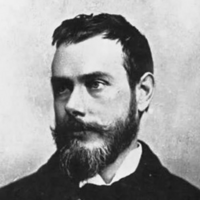
Francis Thompson (16 December 1859– 13 November 1907) was an English poet and ascetic. After attending college, he moved to London to become a writer, but could only find menial work and became addicted to opium, and was a street vagrant for years. A married couple read his poetry and rescued him, publishing his first book Poems in 1893. Thompson lived as an unbalanced invalid in Wales and at Storrington, but wrote three books of poetry, with other works and essays, before dying of tuberculosis in 1907. Life and work Thompson was born in Winckley Street, Preston, Lancashire. His father, Charles, was a doctor who had converted to Roman Catholicism, following his brother Edward Healy Thompson, a friend of Cardinal Manning. Thompson was educated at Ushaw College, near Durham, and then studied medicine at Owens College, now the University of Manchester. He took no real interest in his studies and never practised as a doctor, moving instead to London in 1885, to try to become a writer. Here he was reduced to selling matches and newspapers for a living. During this time, he became addicted to opium, which he first had taken as medicine for ill health. Thompson started living on the streets of Charing Cross and sleeping by the River Thames, with the homeless and other addicts. He was turned down by Oxford University, not because he was unqualified, but because of his drug addiction. Thompson attempted suicide in his nadir of despair, but was saved from completing the action through a vision which he believed to be that of a youthful poet Thomas Chatterton, who had committed suicide almost a century earlier. A prostitute– whose identity Thompson never revealed– befriended him, gave him lodgings and shared her income with him. Thompson was later to describe her in his poetry as his saviour. She soon disappeared, however, never to return, in his estimation because she feared she would taint his growing reputation. In 1888, he had been 'discovered’ after sending his poetry to the magazine Merrie England. He had been sought out by the magazine’s editors, Wilfrid and Alice Meynell. Recognizing the value of his work, the couple gave him a home and arranged for publication of his first book Poems in 1893. The book attracted the attention of sympathetic critics in the St James’s Gazette and other newspapers, and Coventry Patmore wrote a eulogistic notice in the Fortnightly Review of January 1894. Concerned about his opium addiction, which was at its height following his years on the streets, the Meynells sent Thompson to Our Lady of England Priory, Storrington. Thompson subsequently lived as an invalid at Pantasaph, Flintshire in Wales and at Storrington. A lifetime of extreme poverty, ill-health, and an addiction to opium took a heavy toll on Thompson, even though he found success in his last years. He would eventually die from tuberculosis at the age of 47, in the Hospital of St John and St Elizabeth and he is buried in St. Mary’s Roman Catholic Cemetery in Kensal Green. His tomb bears the last line from a poem he wrote for his godson - Look for me in the nurseries of Heaven. Style and influence His most famous poem, The Hound of Heaven, describes the pursuit of the human soul by God. This poem is the source of the phrase “with all deliberate speed,” used by the Supreme Court in Brown II, the remedy phase of the famous decision on school desegregation. A phrase in The Kingdom of God is the source of the title of Han Suyin’s novel Love Is a Many-Splendored Thing. In addition, Thompson wrote the most famous cricket poem, the nostalgic At Lord’s. He also wrote Sister Songs (1895), New Poems (1897), and a posthumously published essay, Shelley (1909). He wrote a treatise On Health and Holiness, dealing with the ascetic life, which was published in 1905. G. K. Chesterton said shortly after his death that “with Francis Thompson we lost the greatest poetic energy since Browning.” Among Thompson’s devotees was the young J. R. R. Tolkien, who purchased a volume of Thompson’s works in 1913-1914, and later said that it was an important influence on his own writing. The American novelist Madeleine L’Engle used a line from the poem The Mistress of Vision as the title of her last Vicki Austin novel, Troubling a Star. In 2011, Thompson’s life was the subject of the stage play and film script HOUND (Visions in the Life of the Poet Francis Thompson) by writer/director Chris Ward, which has been performed in various venues around London. Jack the Ripper suspect In his 1999 book Paradox, Australian author and educator Richard Patterson named Thompson as a possible identity of serial killer Jack the Ripper. On 6 November 2015, Patterson strengthened his claim. Home Thompson’s birthplace, in Winckley Street, Preston is marked by a memorial plaque. The inscription reads: "Francis Thompson poet was born in this house Dec 16 1859. Ever and anon a trumpet sounds, From the hid battlements of eternity." The home in Ashton-under-Lyne where Thompson lived from 1864 to 1885 was also marked with a blue plaque. In 2014, however, the building collapsed. References Wikipedia—https://en.wikipedia.org/wiki/Francis_Thompson
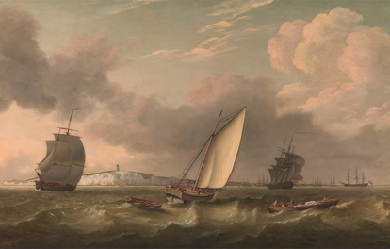

Robert Southey (August 12, 1774 in Bristol– March 21, 1843 in London) was an English poet of the Romantic school, one of the so-called “Lake Poets”, and Poet Laureate for 30 years from 1813 to his death in 1843. Although his fame has long been eclipsed by that of his contemporaries and friends William Wordsworth and Samuel Taylor Coleridge, Southey’s verse still enjoys some popularity.
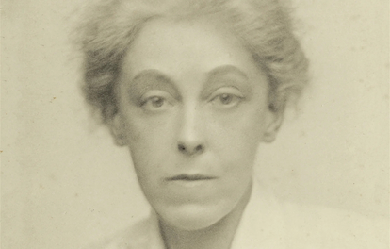
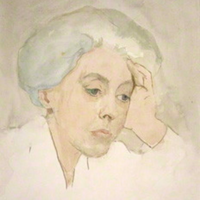
Charlotte Mary Mew (15 November 1869– 24 March 1928) was an English poetess, whose work spans the cusp between Victorian poetry and Modernism. She was born in Bloomsbury, London, the daughter of the architect Frederick Mew, who designed Hampstead town hall, and Anna Kendall.The marriage produced seven children. Charlotte, nicknamed Lotti by her family, attended Gower Street School, where she became infatuated with the school’s headmistress, Lucy Harrison, and lectures at University College London. Her father died in 1898 without making adequate provision for his family; two of her siblings suffered from mental illness, and were committed to institutions, and three others died in early childhood leaving Charlotte, her mother and her sister, Anne. Charlotte and Anne made a pact never to marry for fear of passing on insanity to their children. (One author calls Charlotte “almost certainly chastely lesbian)”. Through most of her adult life, Mew wore masculine attire and kept her hair short, adopting the appearance of a dandy.


